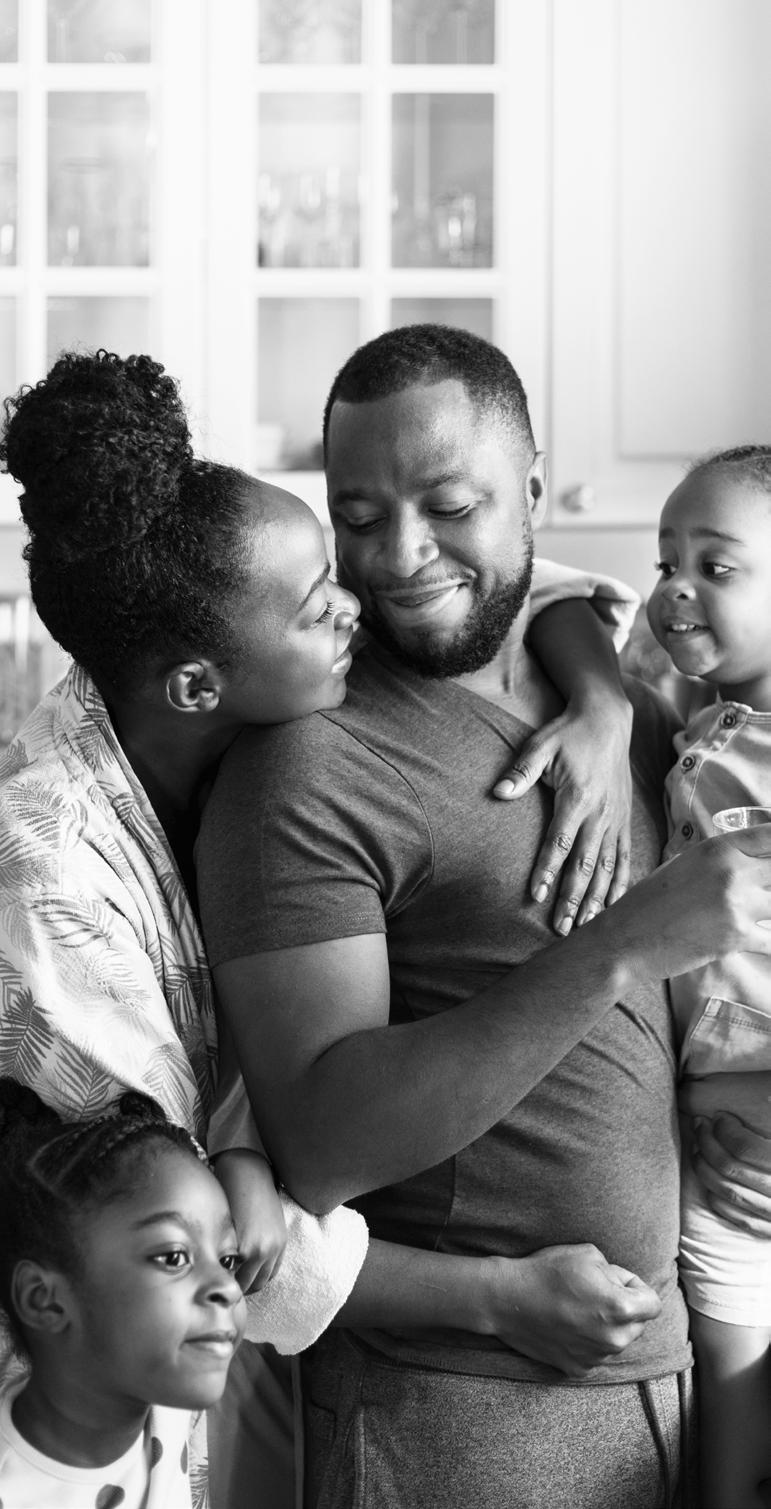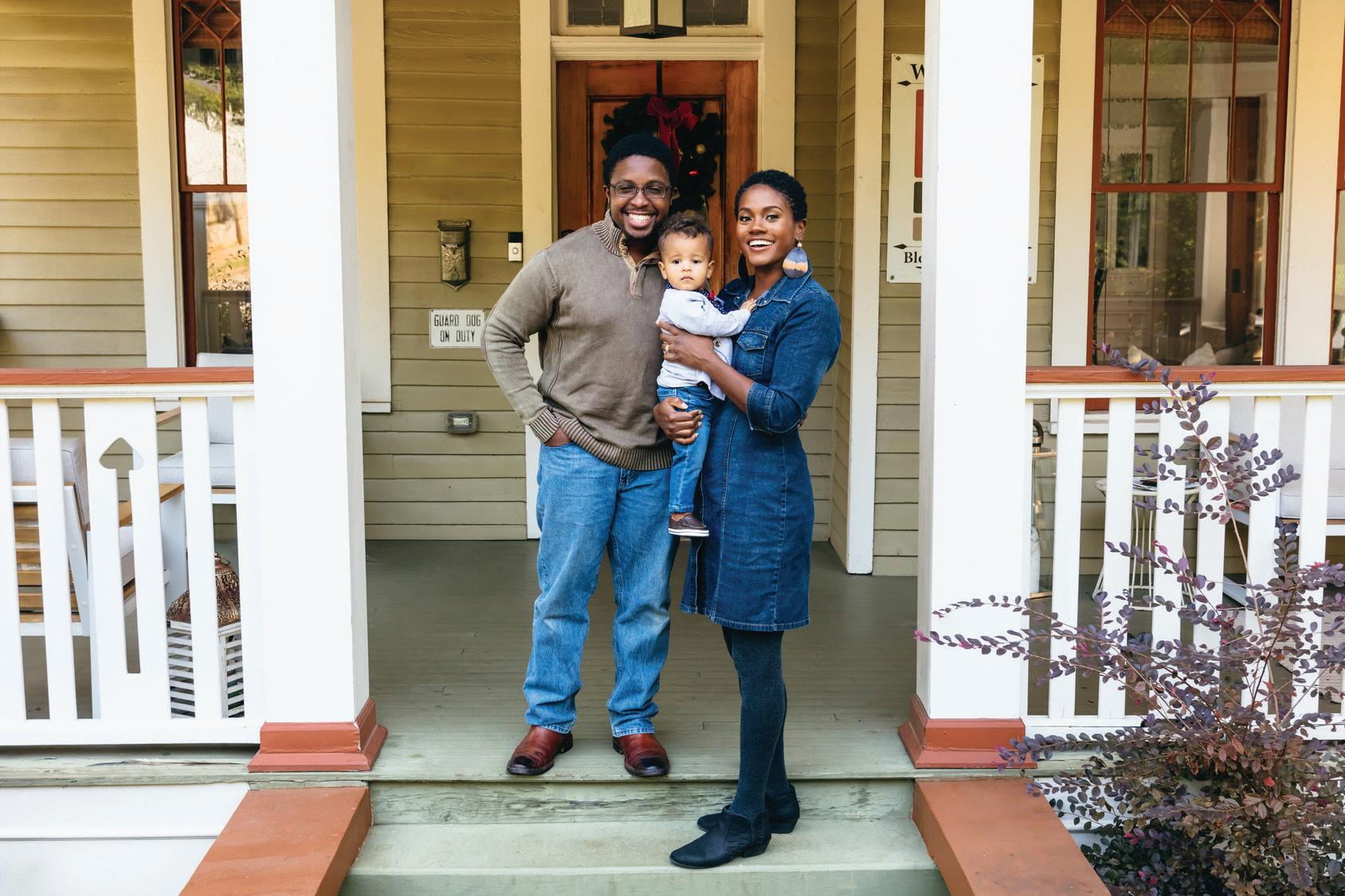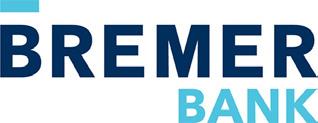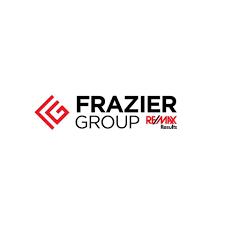
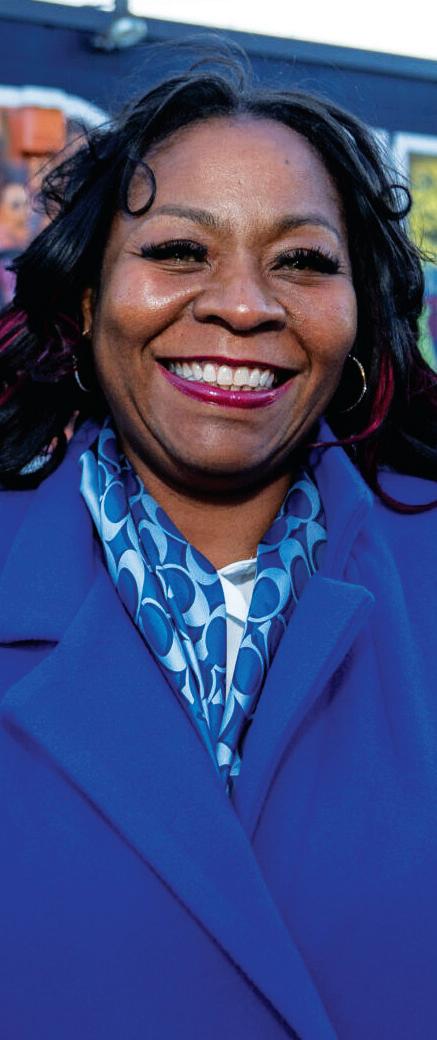
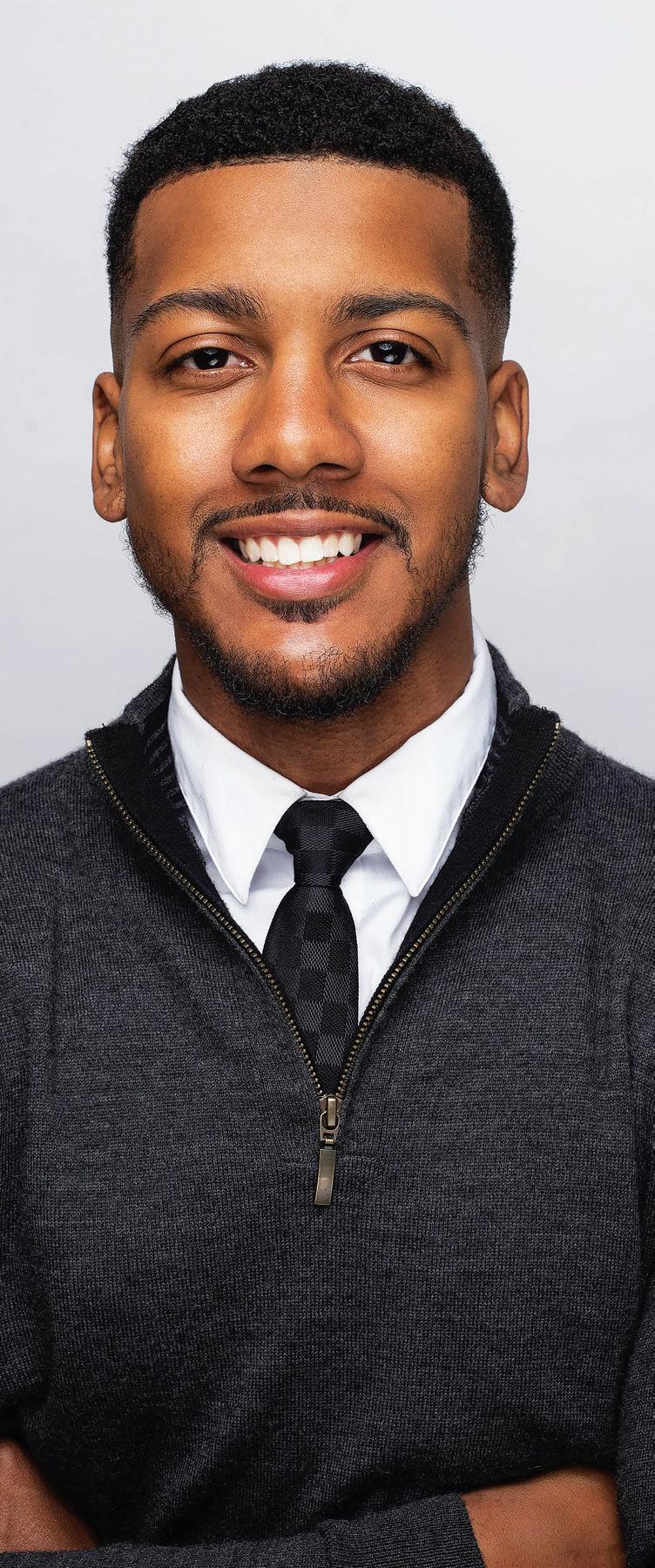

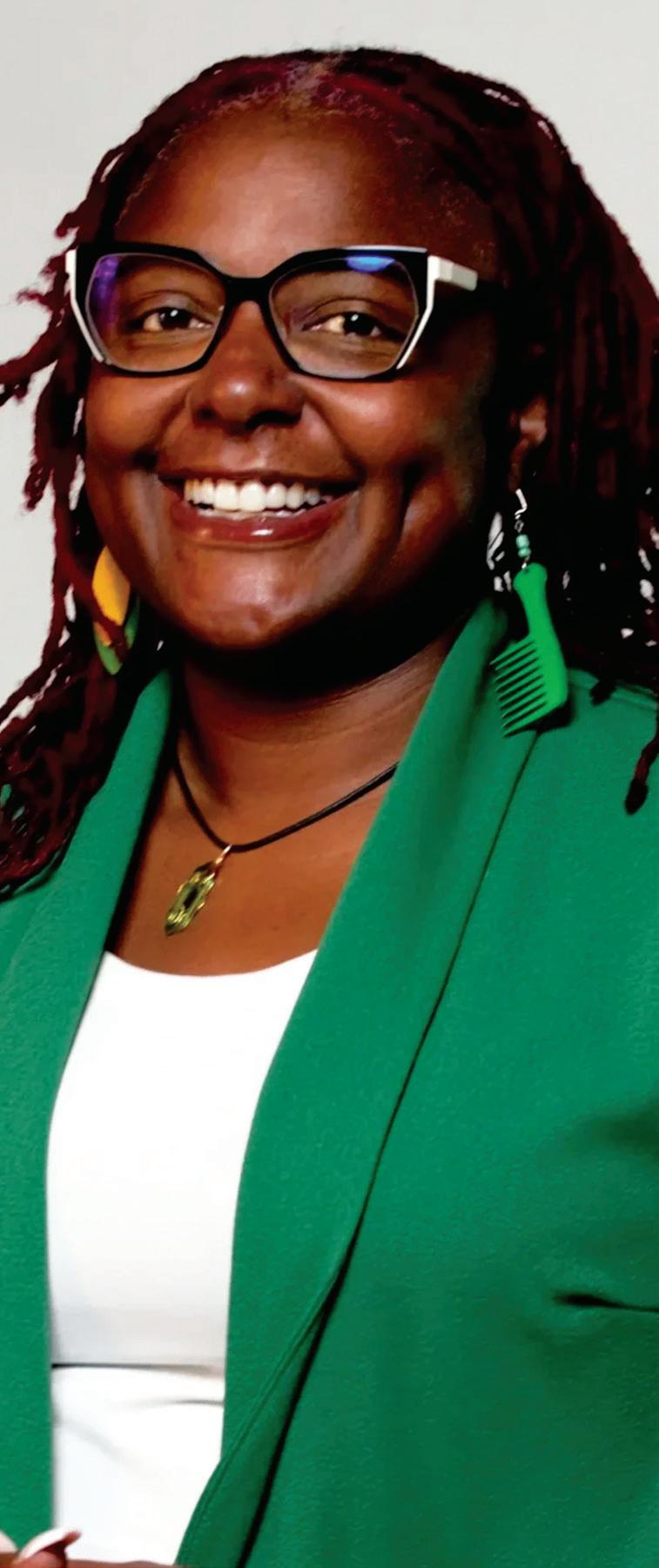






By Pulane Choane Contributing Writer
As Minneapolis nears the 2025 municipal election on November 4, the race for Ward 5 City Council has become one of the city’s most closely watched contests; and for good reason.
Ward 5, which stretches across much of North Minneapolis, has long been seen as an indicator of the city’s broader political and social shifts. The community, rich with history and resilience, has endured decades of disinvestment, redlining, and inequity. But as election season intensifies, the conversation is no longer just about what was lost but rather, it’s about what can be rebuilt.
That theme came alive during a recent broadcast of Radio KFAI 90.3 FM’s popular program, The Conversation With Al McFarlane, where McFarlane hosted an in-depth discussion with three of the ward’s City Council candidates: Ethrophic Burnett, Miles Wilson, and Andrea Young.
Together, they spoke candidly about the future of the North Side, touching on public safety, affordable housing, economic revitalization, and the upcoming Blue Line light-rail extension, all while grounding their visions in lived experience.
Ethrophic Burnett: From City Hall to the streets
For Ethrophic Burnett, the campaign is about connecting City Hall to the realities on the ground. A longtime Minneapolis city employee and former council aide, Burnett said she’s seen both the bureaucracy and the struggle, and she wants to close that gap.
“I bring to this office an understanding
of what it means to be a community member and a bridge to resources,” she told McFarlane. “My job is to make sure residents are engaged before and after the mayor’s budget comes out so I can advocate for what they’ve been asking for all year.”
Burnett’s view of leadership is rooted in direct service. When McFarlane mentioned a growing homeless encampment near his own newsroom Burnett recalled how she’d recently done a ride-along with police officers to see the problem firsthand.
“You can’t fix what you don’t face,” she said. “We’re dealing with addiction, homelessness, mental health, and yes, a fentanyl crisis. Some folks don’t want help, some do. But we don’t stop showing up. We keep offering services, because that’s how you build trust and community safety.”
Burnett described her candidacy as a bridge between community empathy and municipal action. “It’s about bringing those conversations: from the neighborhoods to the council floor and making sure they translate into resources that actually meet people’s needs.”
Miles Wilson: Safety as the foundation of growth
Miles Wilson, a third-generation Northsider and policy analyst, grew up playing basketball and volunteering at local parks, and he’s watched too many of them deteriorate. For him, rebuilding Ward 5 starts with public safety.
“When there’s no safety, you don’t see investment,” Wilson said plainly. “We need honesty, transparency, and accountability across every level, from residents to the police to our community response teams. If we can restore safety, economic growth will follow.”
Wilson’s campaign centers on relation-
ships, with small businesses, local government, and residents. “We can’t rebuild without talking to each other,” he said. “That means everyonefrom the county to the school board to the mayor, working together to get things done.”
He described seeing the challenges firsthand: unhoused residents setting up near business corridors, families feeling unsafe, and small businesses struggling to stay afloat. “When I see that, I don’t walk away,” Wilson said. “I connect them to resources like Turning Point, I clean the area, I call 311. We can support our businesses and care for our people at the same time.
Anndrea Young: Investing without displacing: For Anndrea Young, community investment must come with protection, especially for those who have stayed in North Minneapolis through decades of upheaval.
Young, who serves as the executive director of the Heritage Park Neighborhood Association, has been on the frontlines of organizing around housing and environmental justice. She’s worked with the Zero Burn Coalition and the Blue Line Coalition, helping secure $10 million in anti-displacement funding for residents living along the proposed light-rail route.
“I want to see North Minneapolis invested in,” she told McFarlane. “But we also have to make sure that the people who’ve lived here for generations can stay. Too many have already been priced out or pushed out.”
Young’s advocacy also challenges how the city sees the North Side. “This area was redlined,” she said. “We were put here and then called the problem. Even the highway that cut through our community was justified as ‘cleaning up’ the neighborhood. We’re still living with that legacy. But it’s time to write a new one.”
Pearll Warren’s vision for Ward 5 For longtime Northsider Pearll Warren, this race is personal.
“I’ve watched my city change in its entirety,” she told Al McFarlane on The Conversation With Al McFarlane on Radio KFAI 90.3 FM. “Beyond the pandemic and the civil uprising, so much has shifted. I had to ask myself, what can I do to help build something sustainable for our city?”
Warren, who’s running for Minneapolis City Council Ward 5, manages financial coaching at Twin Cities Habitat for Humanity, where she leads the Advancing Black Homeownership program. Her days are spent helping families prepare for home ownership, strengthen their credit, and stay in their homes. She said that work, and her decades of lived experience in North Minneapolis, pushed her to run.
“Safe, suitable, and sustainable housing is very important to me,” she said. “I also believe in clear pathways to business ownership and business development so we can recycle our dollars throughout the community and balance out our tax burdens in Ward 5.”
Warren came to Minneapolis in 1980 with her family and has lived most of her life on the Northside. “I bring a lot of lived experience to the table,” she said. “I’ve seen thriving businesses and strong neighborhoods, which are places where people felt safe walking, shopping, working, and raising their kids.”
Recalling her childhood, she also added: “I performed at Family Day on Plymouth Avenue when McDonald’s was right there on the corner. Broadway was full of shops and cafés. We’d stop by the Butter Bakery. You could sit down, talk, eat, and feel connected. Those places
By Pulane Choane Contributing Writer
Minnesota Senator Tina Smith says the ongoing government shutdown, rising political division, and renewed challenges to the Voting Rights Act are exposing what she calls “a defining test for American democracy.”
Speaking on Radio KFAI 90.3 FM’s
The Conversation with Al McFarlane, Smith called for citizens to remain engaged even as political battles in Washington deepen. The senator appeared on the long-running community affairs program to discuss national unrest, civic participation, and the future of democratic institutions. Smith began by describing
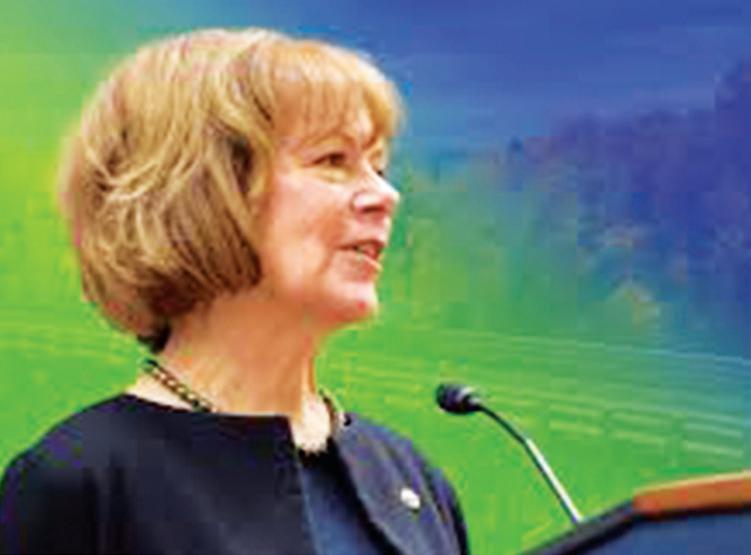
the No Kings demonstrations, a national wave of rallies organized to defend democracy and oppose authoritarianism. “Organizers told us there were more than one hundred thousand people just in the Minneapolis rally,” she said. “Some had
never been to a protest before but felt called to be there. The energy was positive and patriotic. People understood that power comes from the people.”
The senator said she viewed the weekend as evidence that many Americans, regardless of political background, want to reclaim a sense of unity and shared purpose. “It was a reminder of what our country should look like,” she said. “Democracy means participation, not passivity.”
What caused the shutdown
Turning to the federal government’s partial shutdown, Smith explained that the standoff is rooted in a disagreement over health care subsidies that help working families pay for insurance. “The government is shut down because Republicans are refusing to extend the tax credits that make health insurance affordable,” she said.
“People buying coverage on the exchanges are seeing their premiums double or triple.” Smith argued that the situation reflects a broader pattern of misplaced priorities. “Last summer, they passed their big partisan tax bill that benefited the wealthiest Americans and corporations,” she said. “But they left working families behind. We are simply asking them to come to the table and negotiate to keep health costs from skyrocketing.”
For many listeners, her remarks connected a technical policy issue to a lived reality of affordability. Minnesota’s insurance markets, like those in other states, have faced repeated cost fluctuations since the Affordable Care Act
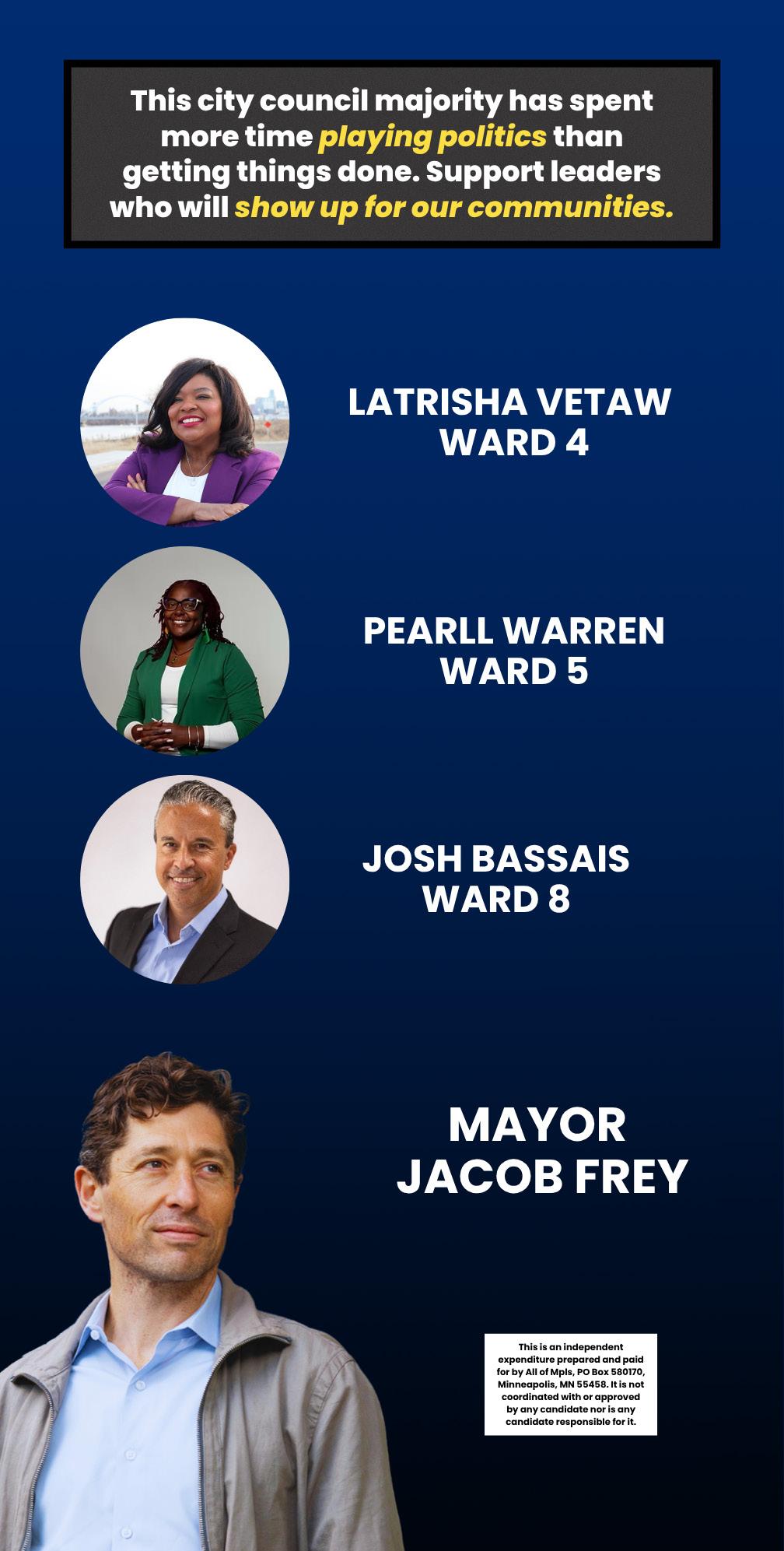

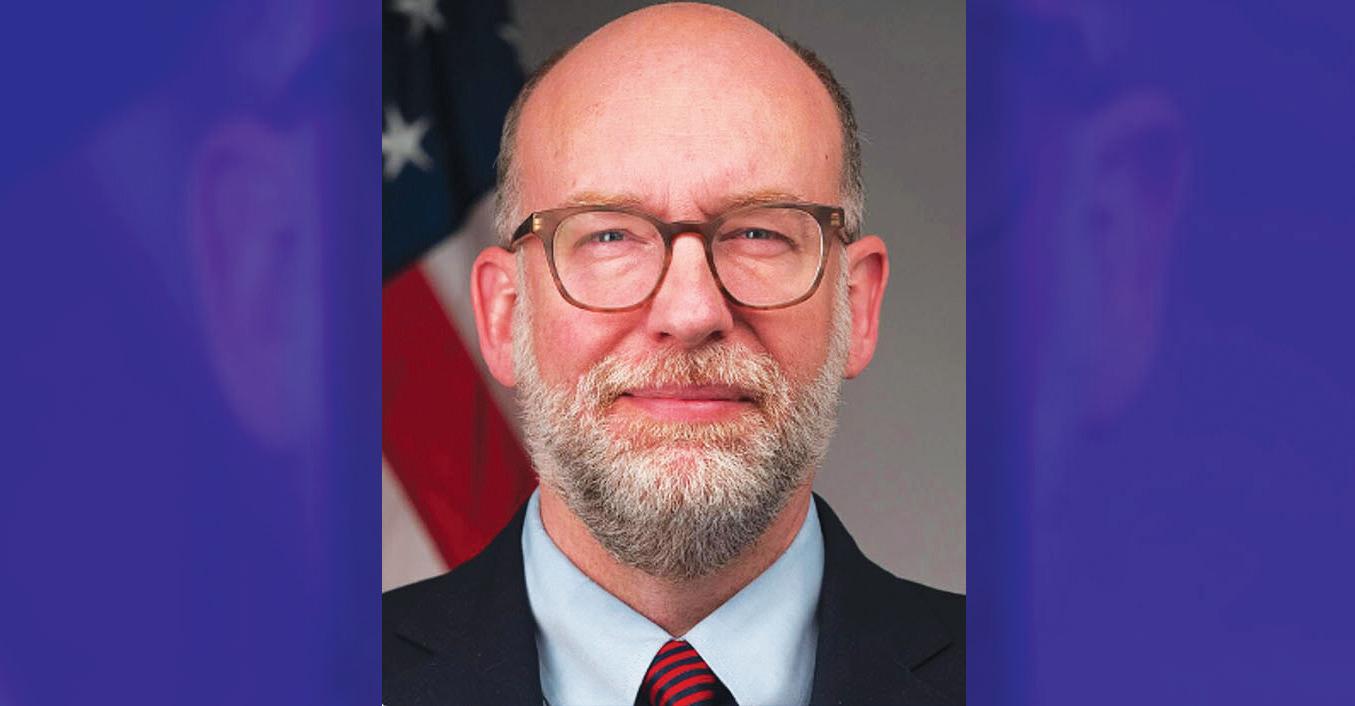
By Stacy M. Brown Black Press USA Senior National Correspondent
ProPublica’s in-depth investigation reveals that Russell Vought, Donald Trump’s former budget director, is the real power inside this White House. Vought is the principal author of Project 2025, a racist and authoritarian blueprint that reshapes government around a single goal: to make America a white Christian nation. While Trump holds the title of president, it is Vought who drives policy, using the machinery of government to wage war on equality and democracy. Pro-
Publica’s reporting shows that Vought has consolidated power through the Office of Management and Budget, controlling federal spending, freezing funds, and shutting down entire agencies. He has used his position to block aid for the poor, cancel education programs, and dismantle health and environmental protections that serve Black and brown communities. Inside Washington, even senior officials describe the government as one where Vought, not Trump, is calling the shots. Vought calls himself a Christian nationalist and says America was “meant to be a Christian nation.” In speeches and documents, he has vowed
to “traumatize” civil servants who he sees as part of a liberal “regime.” His chapter in Project 2025 outlines a plan to let the president control agencies that have traditionally been independent, including the Justice Department. The League of Conservation Voters notes that Vought’s section of the plan pushes mass firings of federal employees and the suspension of funds Congress has already approved. When Trump asked Vought during his first term to “find a way to counter Black Lives Matter,” he delivered. As OMB director, he ordered the cancellation of federal contracts that mentioned white privilege or systemic racism.
He replaced diversity and equity training with a new ideology that celebrates racial hierarchy. That order became one of the first building blocks of Project 2025. ProPublica’s reporting shows that Vought now uses his control over the budget to punish opponents and reward those who fall in line. He has paused or canceled more than $400 billion in funding for programs that support education, public housing, and medical research. Many of these programs are lifelines for low-income families and for Black Americans who have fought for decades to
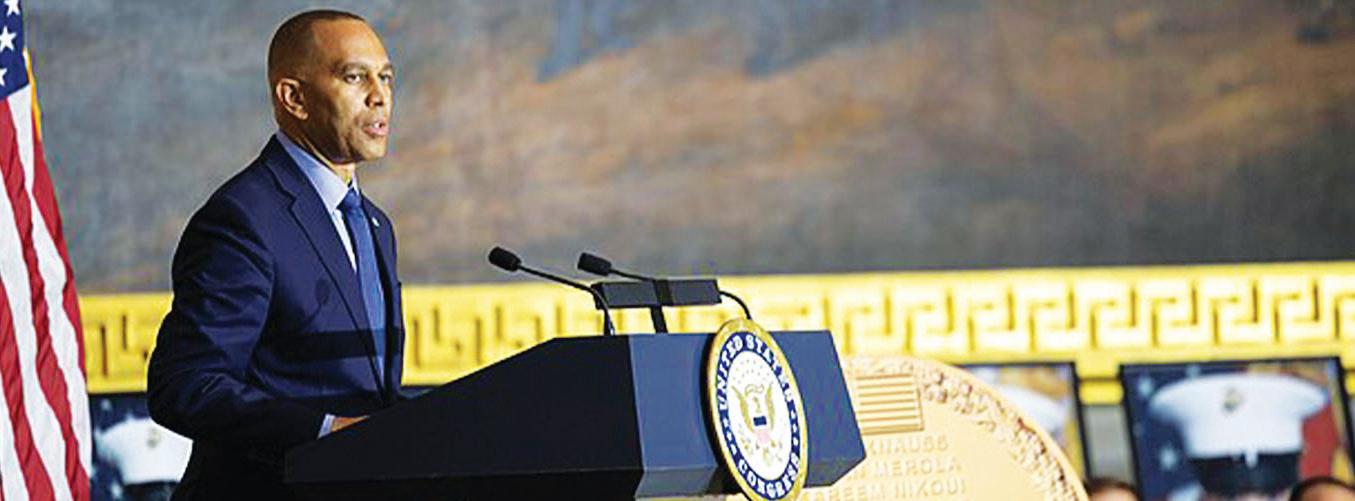
Pardoned Jan 6 Trump supporter arrested in New York for death threat on leader Hakeem Jeffries
By Lauren Burke Black Press USA
“Hakeem Jeffries makes a speech in a few days in NYC.
I cannot allow this terrorist to live,” a man named Christopher Moynihan allegedly wrote in text messages regarding House Democratic Leader Hakeem Jeffries, according to law enforcement authorities in Dutchess County, New York. President Trump pardoned Moynihan after he was charged for his actions on Jan. 6, 2021, at the U.S. Capitol. Trump granted clemency to over 1,400 defendants charged in relation to the violent attack on the U.S. Capitol within hours of his re-

turn to the White House.
“Christopher Patrick Moynihan, 32, of Salt Point, New York, was sentenced yesterday to 21 months in prison. Moynihan was found guilty, on August 23, 2022, of obstruction of an official proceeding, a felony. He also pleaded guilty to a total of five related misdemeanor charges. In addition to the prison term, Judge Christopher R. Cooper ordered 36 months of supervised release and restitution of $2,000,” read a Department of Justice press release on Feb. 2, 2023. According to the Department of Justice, surveillance cameras, Moynihan, and other individuals entered the U.S. Senate Chamber during the violent attack by Trump
supporters at the U.S. Capitol on Jan. 6, 2021. While in the Senate Chamber, Moynihan paged through a notebook on a Senator’s desk, took pictures with his cellphone, and said, “there’s gotta be something in here we can f—- use against these —-bags.”
Now Moynihan is in the news again. Moynihan is one of several individuals whom Trump pardoned who have been rearrested. “The New York State Police, Bureau of Criminal Investigation at Poughkeepsie (BCI), in conjunction with the Federal Bureau of Investigation Joint Terrorism Task Force (FBI-JTTF), announces the arrest of Christopher Moynihan, 34, of Clinton,

New York, for Making a Terroristic Threat, a Class D felony. On October 18, 2025, the State Police were advised by the FBI-JTTF. That Moynihan had made threats to kill a member of Congress,” a press statement by the New York State Police read.
“Following a thorough investigation, Moynihan was arrested and arraigned before the Town of Clinton Court. He was remanded to the Dutchess County Justice and Transition Center instead of $10,000 cash bail, a $30,000 bond, or an $80,000 partially secured bond,” the release, posted on the New York State Police website, informed. Moynihan was par-

By
Reverend Dr. Benjamin F.
Chavis Jr. President and CEO
of the National Newspaper Publishers Association (NNPA) Chair of Spill the Honey and the Black Jewish Action Alliance (BJAA)
Knowing and understanding history is important. Learning from history ensures that it repeating the past is not inevitable. Discerning lessons from history enables reflective and proactive work to shape a better future for all of humanity. Given the current divisiveness in America, I believe it is time overdue to remember and to reaffirm the shared legacies between Blacks and Jews.
Recently, I participated in a training forum, The Shared Legacies Professional-Development Workshop, for educators in Los Angeles at The Jewish Federation. The event was hosted by Spill the Honey, a national nonprofit that I chair with the mission of using
the transformative power of the arts to change hearts and minds and seek to move people to act for social change.
The goal is to amplify the voices of the historic African American-Jewish American civil rights coalition to reinforce shared legacies that today can still foster empathy, nurture mutual care and compassion, transformation, and build partnerships that transcend divisions of race, class, gender, religion, and ethnicity.
The convening interdisciplinary program involved educators, administrators, and community leaders from across Los Angeles to explore how the historic Black–Jewish alliance can inform classroom learning today. Educators gained practical tools to recognize, challenge, and respond to the rise of antisemitism and racism across the nation. Over 100 people attended the training. In my view, our communities not only share a past legacy of solidarity, but we

By Michael J. Socolow Professor of Communication and Journalism, University of Maine
The chairman of the Federal Communications Commission is displeased with a broadcast network. He makes his displeasure clear in public speeches, interviews and congressional testimony.
The network, afraid of the regulatory agency’s power to license their owned-and-operated stations, responds quickly. They change the content of their broadcasts. Network executives understand the FCC’s criticism is supported by the White House, and the chairman implicitly represents the president.
I’m not just referring to the recent controversy between FCC Chairman Brendan Carr, ABC and Jimmy Kimmel. The same chain of events has happened repeatedly in U.S. history.

Franklin
FCC chairman, James
warned the networks about censoring news commentators. Then there was John F. Kennedy’s FCC chairman, Newton Minow, who criticized the networks for not airing more news and public affairs programming to support American democracy during the Cold War. And there was George W. Bush’s FCC chairman, Michael Powell. He decided that a fleeting “wardrobe malfunction” during the 2004 Super Bowl halftime show –when Janet Jackson’s breast was exposed – was sufficient to punish CBS with a fine. In each of those cases, the FCC represented the views of the White House. And in each case, the regulatory agency was employed to pressure the networks into airing content more aligned with the


By
I like a good horror movie. Give me a dark theater, a bag of popcorn, and that moment when the villain can be seen in the background. But lately, I’ve been watching something much scarier than anything Hollywood could dream up. It’s called the federal government shutdown, and the monster behind it lives at 1600 Pennsylvania Avenue.
Every day of this shutdown feels like a new scene in a haunted house. You know the one, doors creak open, lights flicker, and someone always insists everything is fine right before it all collapses. Except this time, it’s not fake. In Minnesota, our food shelves are running out of food. Groveland Emergency Food Shelf in Minneapolis
had to limit families to three days a week because too many people are showing up hungry. SNAP benefits are on the verge of disappearing for more than 440,000 Minnesotans. WIC is running out of funds for mothers and babies. And federal workers, our neighbors, are still showing up to work but getting paychecks that say zero.
Air traffic controllers are working sixty-hour weeks, then driving for Uber at night to afford groceries. Flight crews are dropping off pizzas at control towers to keep their colleagues fed. This is what “fiscal responsibility” looks like in Trump’s America: people who keep planes in the sky are living off DoorDash tips.
Meanwhile, the President is building himself a $250 million ballroom at the White House. You read that right. While families worry about how to buy food, the East Wing is being torn apart to make room for a golden palace that looks suspiciously like Mar-a-Lago. He says it’s privately funded,
but no one knows by whom. Maybe it’s a new kind of ghost story, the kind where the spirits of corporate donors haunt the chandelier.
If that wasn’t enough, the administration just handed Argentina a $20 billion bailout. The reason? To prop up Trump’s political ally there. I can’t help but notice that when it comes to feeding American families, the cupboard is bare, but when it comes to feeding foreign politicians, there’s always room for seconds. Minnesota’s soybean farmers, already hit hard by his tariffs, are watching Argentina and Brazil take over the Chinese markets they used to depend on. It’s hard to wave an “America First” flag when the president is literally paying other countries to take your business. Then came the plan to import more Argentine beef to lower prices. U.S. ranchers, including many right here in the Midwest, are furious. They’re finally making enough to recover from years of drought and low prices, and now they’re be-
ing told the government’s solution is to buy beef from abroad. The whole thing feels like the setup to a bad horror sequel: “Attack of the Cheap Imports.” Somewhere, there’s a lobbyist laughing in the dark. But the real terror of this shutdown isn’t just economic, it’s personal. In Minnesota, more than 9,000 Black women have lost jobs this year. Across the country, 300,000 Black women have been pushed out of the workforce. As Sheletta Brundidge said to Fox 9 while organizing a job fair in Minneapolis, “We are always the first to experience hardship.” She’s right. Black women are the canaries in America’s economic coal mine. When we’re losing jobs, it means the air is getting thin for everyone. Black women make up 12 percent of the federal workforce, nearly double our share of the overall labor force. So when the government decides to “downsize,” it’s our families that lose stability first. These jobs were the pathway to
the middle class for generations of Black Americans, steady work, fair pay, and benefits that built homes and sent kids to college. Now, that path is closing while the ballroom doors swing open.
And the numbers are haunting. Black women’s unemployment has climbed from 5.4 percent in January to 7.5 percent in August. That’s not just a statistic, it’s a warning. Every economist worth their diploma says when Black women’s unemployment rises, it’s the early sign of a broader economic collapse. We feel the tremors first. We always do. The White House says the President is “rebuilding the greatest economy in the world.” But from where I’m sitting in Minnesota, it feels like he’s rebuilding his ballroom while burning down the neighborhood. The people who keep this country running are being ghosted by their own government.
Halloween is supposed to be a time for pretend
Stephen A. Smith has once again aimed
shoulders he stands upon. With all the fervor of a man auditioning for validation from the same establishment that despises his skin, Smith unleashed his latest tirade — not against Donald Trump or Russell Vought or Ste-
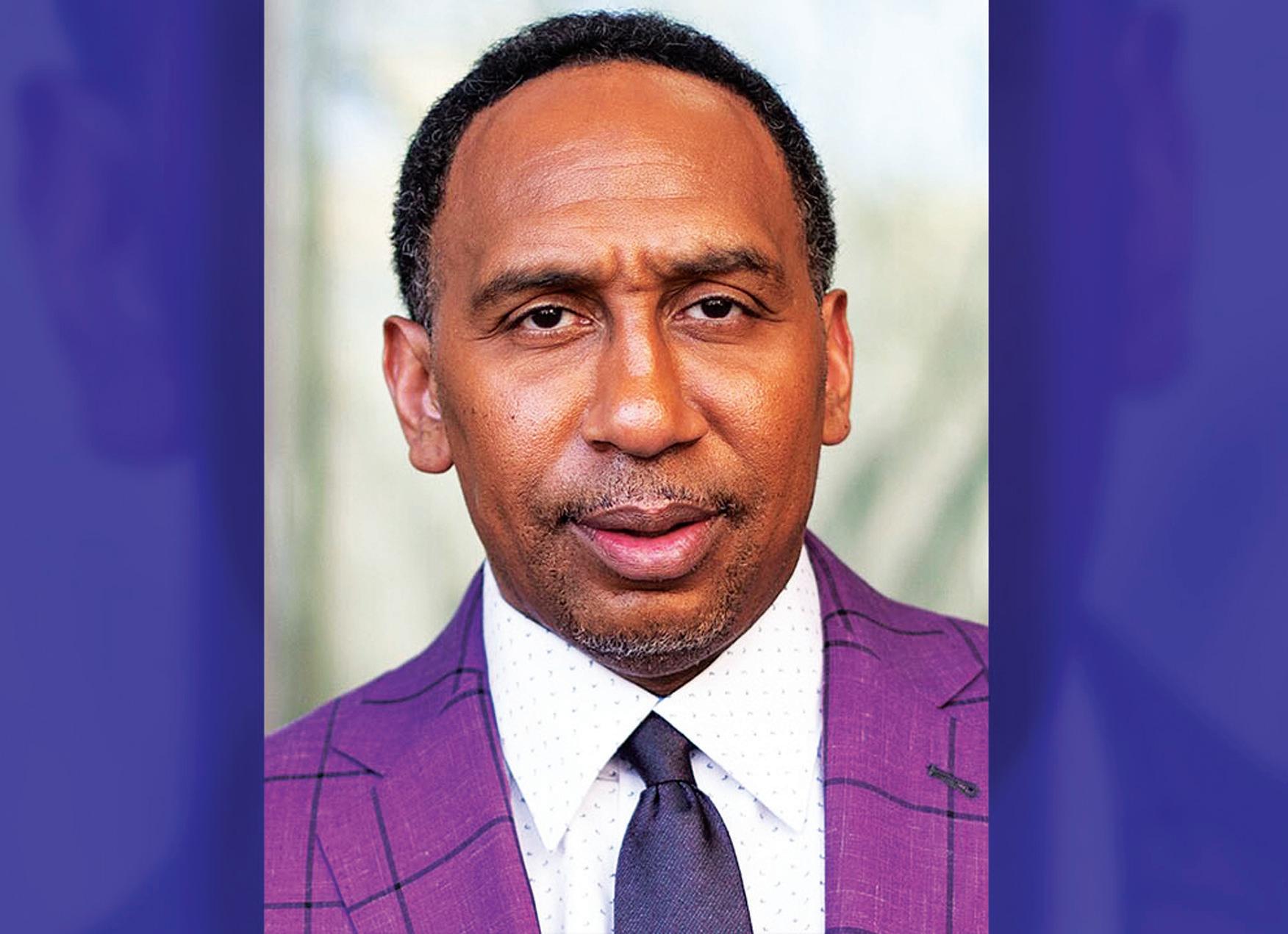
scares. But this year, the fear is real. It’s the mother checking her EBT balance at midnight. It’s the federal worker choosing between gas and groceries. It’s the teacher worried that a child will come to school hungry because WIC ran out. The monsters aren’t in the closet, they’re in charge of the
ment. Still, if there’s one thing I know about our community, it’s that we don’t scare easily. We’ve been through worse and come out stronger. While Washington hides behind marble walls and chandeliers, we’re the ones keeping the lights on in our communities. We volunteer, we vote, and we look out for one another. We don’t need a ballroom to remind us what community looks like. So this Halloween, while Trump is planning his next grand opening, we’ll be busy reopening our hearts to one another. Because the real trick is distraction. And the real treat, the one they can’t take away, is our resilience.
a blueprint for stripping Black and poor Americans of healthcare, food, and human dignity. He was silent when white nationalists marched through Charlottesville and when insurrectionists smeared feces on the walls of the U.S. Capitol. But let a Black woman raise her voice, and suddenly Stephen A. Smith finds his thunder.




phen Miller, the architects of a modern-day apartheid disguised as governance — but against a Black woman who dares to speak truth to power. During an episode of his SiriusXM show, Smith took issue with Texas Congresswoman Jasmine Crockett’s unapologetic criticism of Trump, asking whether her style of confrontation “helps her district.” His words echoed with the same hollow judgment that America has always hurled at outspoken Black women — to be quieter, gentler, and deferential while white men burn the country to ash. The outrage was swift. Rep. Crockett never mentioned Smith by name. She didn’t need to. Her retweets of Tamika Mallory and others said it all. “It’s no longer a difference of opinion,” Mallory wrote. “Stephen A. Smith’s actions are intentional. In this climate, especially, it’s dangerous. Just wondering if you all plan to do him like you did the NFL about Colin? Or are we still watching his commentary on the wakeup?”
Across social media, Black America had seen enough.
Don Salmon wrote, “Stephen A. Smith is a foot soldier for white supremacists. He’s a propaganda mouthpiece. I have never seen the man use his platform to condemn Trump for abusing Black women, but he has a problem with Congresswoman Jasmine Crockett, who is not afraid to call out Trump. He’s not a political scientist or expert in politics. He should stick to sports — he’s done a terrible job with it anyway.” Jason Todd added, “Stephen A. Smith’s alter ego, ‘Step-N-Fetch-It A. Smith,’ emerges once again, this time to criticize Jasmine Crockett.” Another user, The Notorious JTB, wrote, “Stephen A. Smith went after Jasmine Crockett and got dragged into the dirt for it. Loud doesn’t mean smart. He’s finally learning that coming for powerful Black women never ends well.”
And it didn’t end there. Tiffany Cross, speaking on the Native Land Pod, said Smith has “little d*** energy” for his obsession with tearing down Black women. Former Tallahassee mayor Andrew Gillum said Smith needs to “deal with his Black woman issues,”
calling it self-hate. Bakari Sellers added, “I’ve never seen a clip of him where he actually praises a Black woman.” Even Bishop Talbert Swan had smoke for Smith. “Stephen A. Smith has NEVER had smoke for Trump, MAGA, Jan 6 insurrectionists, white Christian nationalists, rogue white police officers, racist judges, teachers, politicians — but Black women?” Swan asked.
Smith’s defenders claim he’s just expressing an opinion, that his critics are trying to “cancel” him. But his own words on The Hill’s reporting expose the deeper rot. “I will never succumb to somebody intimidating and trying to rally folks against me to quell what I have to say,” he said. “Bump that. I ain’t built that way.”
What he didn’t say — what he never says — is anything that risks offending the architects of America’s new Jim Crow. He had no such courage when Trump called Haiti and African nations “s***hole countries.”
None when police bullets tore through unarmed Black men and women. None when Russell Vought drafted Project 2025 —
The irony is biblical. This is the same man who called LeBron James “selfish” for defending his community, who questioned Serena Williams’s integrity, and who mocked Colin Kaepernick’s sacrifice. As one post noted, “Stephen A. Smith has spent the last year monetizing tearing down the best of the Black community. LeBron, a pillar of excellence, has devoted his life to tearing him down. Now he’s moved on to Jasmine Crockett, another pillar of excellence? He’s a pathetic little man.” For most in Black America, this is moral treason. The House Negro, Malcolm X warned, “loves his master more than he loves himself.” Smith has perfected that performance for the modern age — a loud voice shouting in the service of power, pretending to speak for us while kneeling at the feet of those who despise us. And so, Crockett, Mallory, Rye, and Cross did what our mothers and grandmothers have always done — they answered back, not with silence or submission, but with a clarity that cuts through
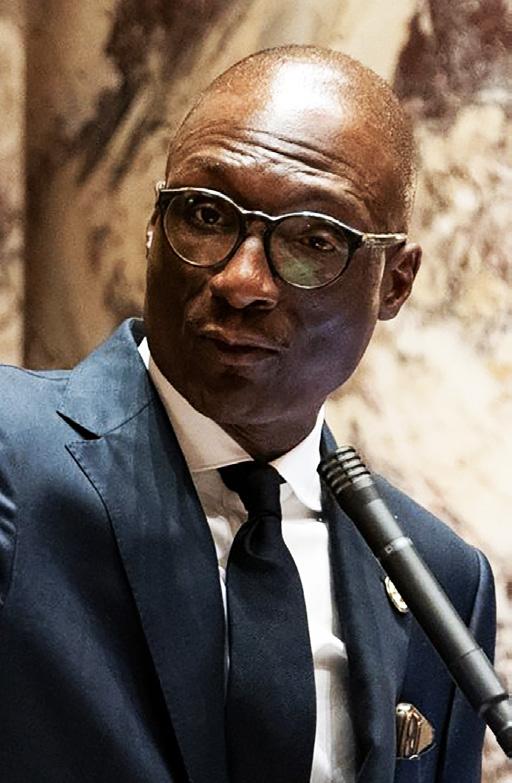
Bobby Joe Champion (SD 59), Representative Esther Agbaje (59B), and Representative Fue Lee (59A) Thursday, November 20, 2025 will host
DFL Leader Zack Stephenson last week appointed Rep. Cedric Frazier as the DFL Co-Chair of the Ways and Means Committee. The Ways and Means Committee is often the last stop for legislation before a floor vote and is in charge of setting the overall budget targets for state government.
Fraizier said “I appreciate Leader Stephenson’s belief in me and my leadership abilities to lead the Ways and Means Committee. I am honored to have Representative Esther Agbaje as my Vice Chair. Her deep knowledge of tax policy, coupled with a clear commitment to fiscal responsibility and equity, is the exact partnership Minnesota needs to counter the uncertainty from Washington.”
”Our shared experience leading the House POCI Caucus proved we can deliver transformative legislation for historically marginalized communities whose voices have too often been excluded from the decision-making process. Now, we bring that same dedication to the Ways and Means Committee. POCI priorities are Minnesota priorities and representation is critical now more than ever in our government,” Frazier said in an newletter to constituents.
He said Minnesota
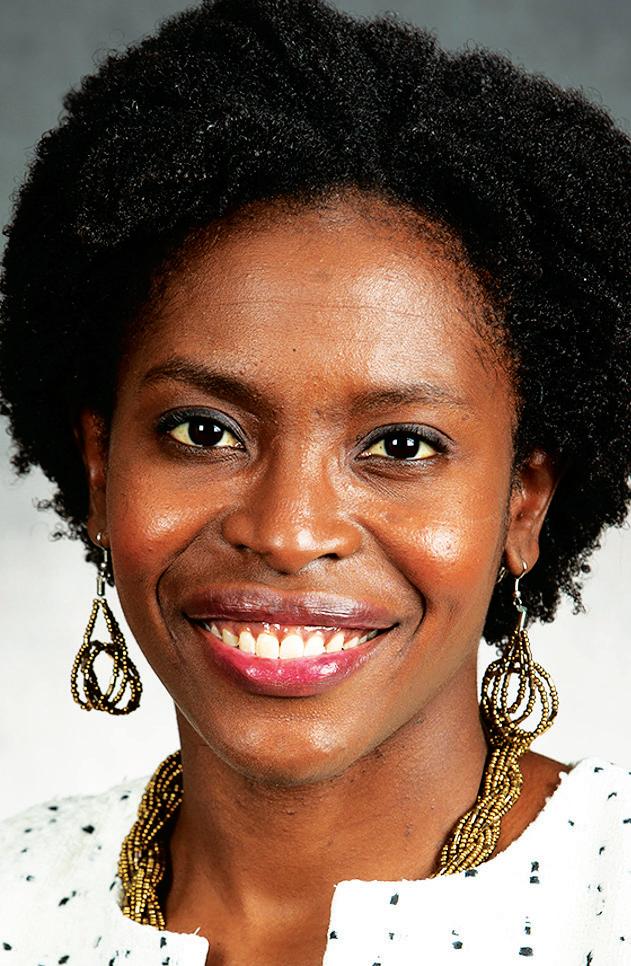
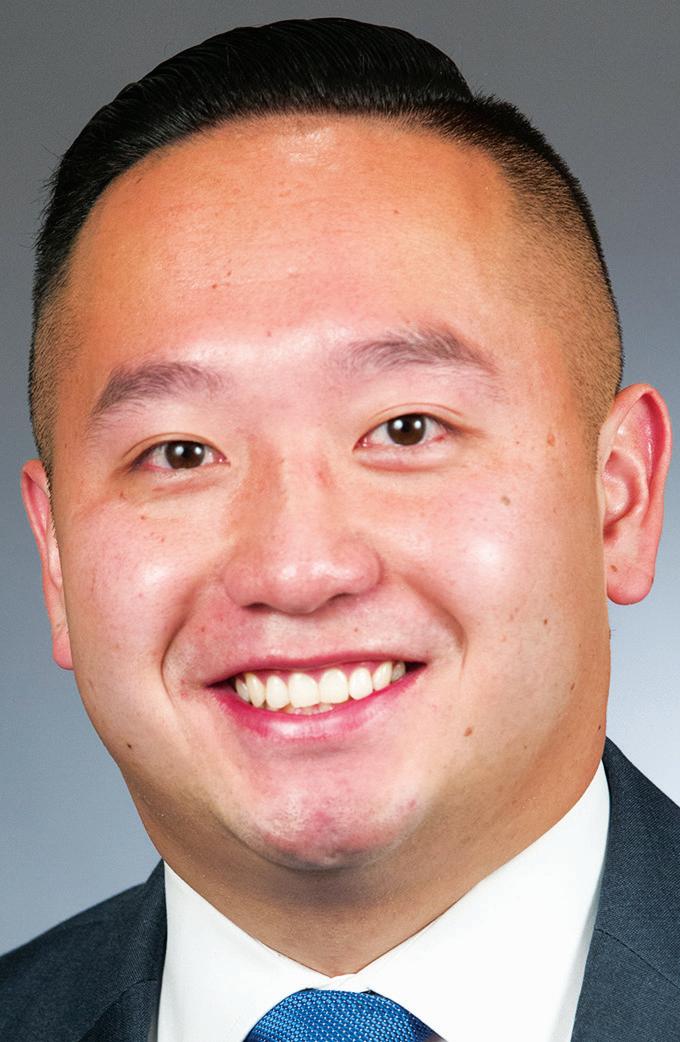
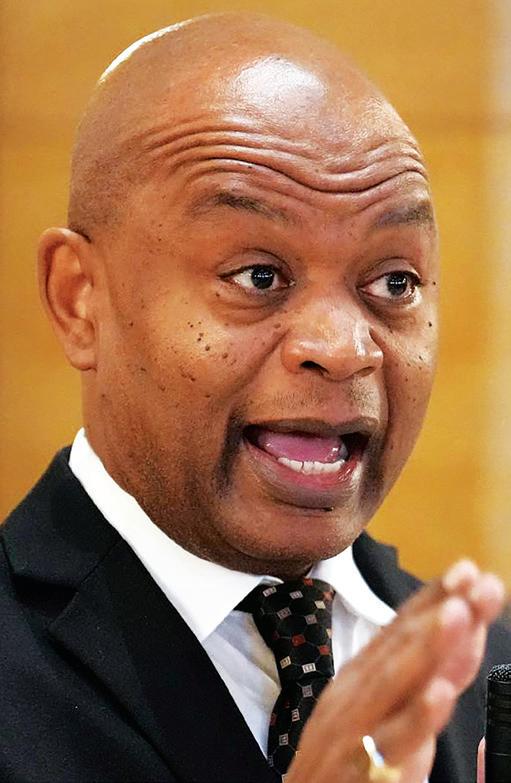
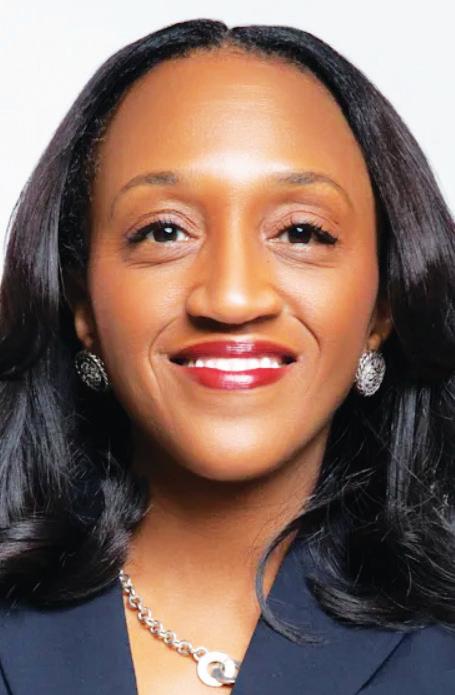

needs leaders who are prepared to stand up and protect all our constituents—families, workers, farmers, and children— from Trump and his Republican cronies and from their reckless cruel, divisive policies.
“We are answering their call and look forward to shepherding a path that secures a better future for all families, workers, and children. I look forward to this new chapter with Rep. Agbaje,” Frazier said. Following new revelations and details about Kingsley Bimpong's death, Frazier reflected on the provision he carried in 2021 requiring law enforcement officers across the state to keep their body-worn cameras on through the entire duration of an incident.
While the bill did not pass, he said, it was intended not only to support the ongoing efforts of rebuilding trust between the public and law enforcement, but also to set parameters for transparency and accountability.
“I will say it again,”dnFrazier said, “Kingsley should be alive today and with his family. As lawmakers, we have the ability to write the laws, but we need our partners at the local level to ensure their implementation. I will continue to advocate for the bill in the upcoming
legislative session.” Kingsley Bimpong died after a DWI arrest in Eagan last year. His family alleges in a recently filed federal lawsuit that police and jail staff mistook symptoms of a major stroke for drug impairment and let him die.
A legal permanent resident from Ghana, Bimpong left his post office job on Nov. 16 complaining of feeling ill. While driving in Eagan he ran a red light, veered into oncoming traffic and drove his vehicle onto the center median of a road.
A wrongful death lawsuit alleges when Eagan Police Sgt. Joseph Moseng stopped Bimpong’s vehicle at 10:44 p.m., Bimpong appeared confused, “could not articulate a complete sentence or thought,” and was unable to state his name, where he was going or where he lived.
Egan police arrested Bimpong and took him to Eagan Police Department headquarters, where he remained handcuffed while the officers waited for a judge to return a search warrant for Bimpong’s blood. According to the lawsuit, officers discussed the possibility that Bimpong could be suffering from a medical issue, but did
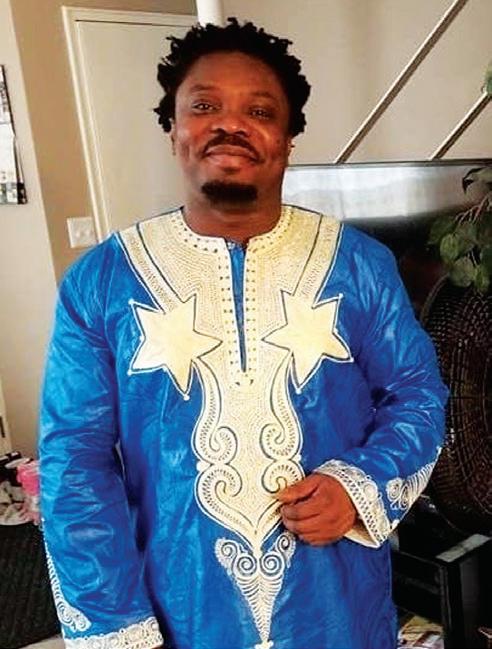
not get care for him, while his condition continued to deteriorate. He collapsed onto the floor and lay there for hours, foaming at the mouth and urinating in his pants while multiple deputies passed by the cell’s floor-toceiling windows and even conducted “well-being” checks. After nearly threeand-a-half hours, according to a report by MPR News, a nurse and a guard entered the holding cell and took Bimpong’s vital signs. Jail staff called for an ambulance, and EMTs arrived just before 5 a.m. on Nov. 17. Bimpong was transported to a hospital in Hastings, where a CT scan found massive intracerebral bleeding. He was transferred
to United Hospital in St. Paul, where he was declared brain dead. Doctors disconnected him from life support on Nov. 19. The Ramsey County Medical Examiner determined that he died of an intracerebral hemorrhage, the MPR new story said. Frazier noted that October was Domestic Violence Awareness Month (DVAM). He said firearms significantly escalate the lethality of domestic violence. “When an abuser has access to a gun, the risk of homicide for intimate partners increases fivefold. We must use every tool available to ensure we protect victims and prevent these tragedies from occurring, leaving families to mourn the loss of a loved one., Frazier said. “I'm honored to have led the effort to pass Minnesota's Extreme Risk Protection Order (ERPO), or "red flag" law. As the House bill author, I'm proud of the life-saving tool we've enacted with advocates and colleagues to give families and communities a vital mechanism to prevent senseless gun violence. Now that the law is implemented, let’s work together to spread awareness about this critical tool, empowering everyone to know these resources save lives and can prevent fu-
ture tragedies. “ Frazier said the Hennepin County Attorney’s Office has staff dedicated to helping people concerned about a loved one’s access to firearms. Those with concerns can contact DASC at (612) 348-5073 to ask for the Extreme Risk Protection Order Specialist or email ERPO.CA@hennepin.us, keeping in mind that the petitioner must file the order in the county where the respondent resides, he said.
Frazier said he and Rep. Mike Freiberg, will host a November town hall on Saturday, November 15, from 10AM to 12PM for residents of Senate District 43. He also said the Cannabis Expungement Board (CEB) will hosti an informative Lunch & Learn on November 5, from 10:30 AM to 1:00 PM to discuss the CEB's work and its impact on Minnesotans. He said people affected by cannabis convictions— whether in legal, social service, or community support roles—or if personally seeking conviction relief, are encouraged you to attend. For more information: Marcia Blakeman: marcia. blakeman@state.mn.us
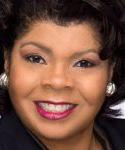
By April Ryan
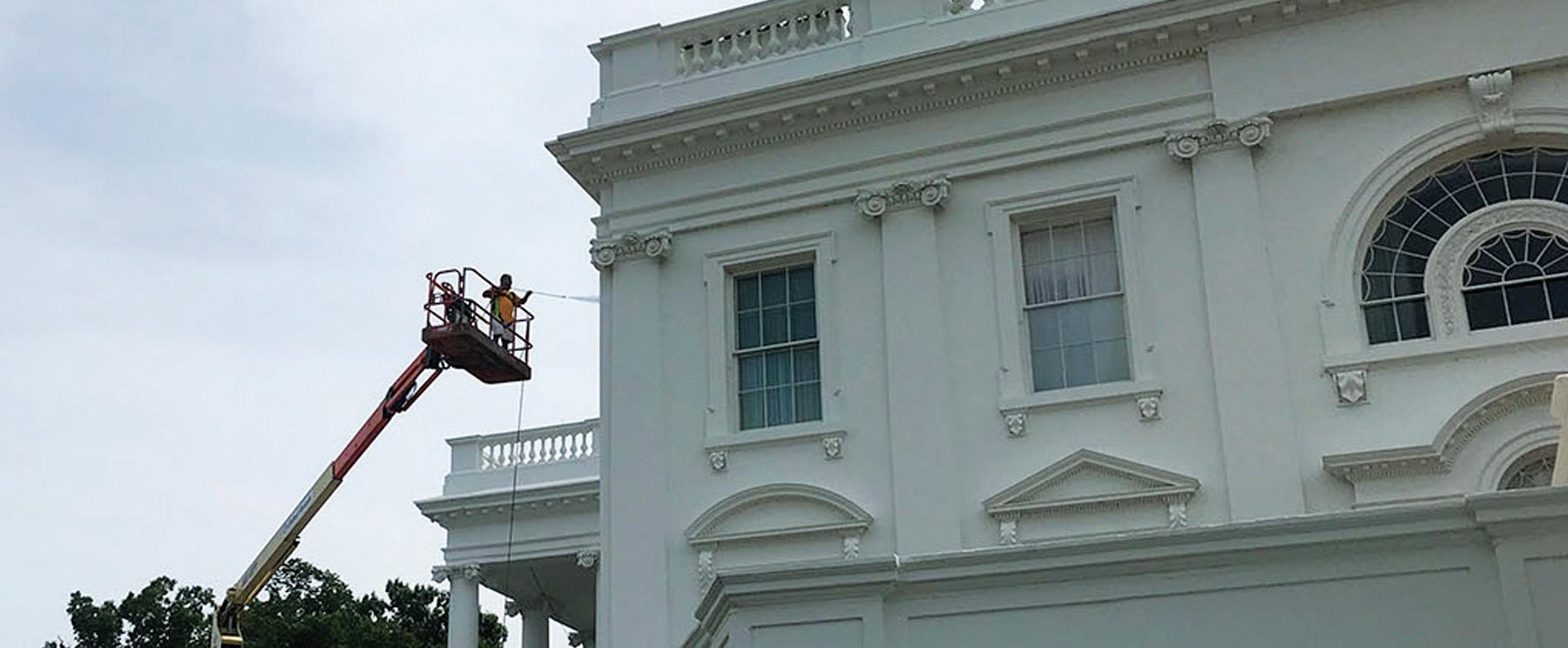
By Stacy M. Brown Black Press USA Senior National Correspondent
As the Trump administration renews its assault on social safety nets—from mental health care to housing and education— young Black Americans are migrating to cities that promise not only economic opportunity but community and freedom. The movement, experts say, reflects a modern Great Migration shaped by politics, culture, and survival. According to Apartment List’s 2025 Best Cities for Black Professionals report, Washington, D.C., Atlanta, San Antonio, Houston, and Dallas lead the nation in economic and professional prospects for Black Americans. The study, developed with the Black employee resource group Black@A-List,
used data on employment, income, homeownership, and representation across key professions to determine where Black professionals thrive despite national headwinds. Washington, D.C.: Power and Prosperity Apartment List found that Washington, D.C., ranks first nationwide for economic opportunity among Black professionals, with a 92 percent employment rate and a median Black income of $52,988, the highest in the country. Roughly 28 percent of D.C.’s population is Black, and 51 percent of Black households own their homes, placing the District third nationally for Black homeownership. The report also noted that more than one-quarter of businesses in D.C. are Blackowned. With Howard University and the University of the District of Columbia producing

a steady stream of graduates, the capital remains a key center for Black leadership and innovation, even as federal policies threaten to dismantle the very programs that sustain progress.
Atlanta: The Black Mecca Holds Its Crown Atlanta earned the No. 2 ranking for best cities for Black professionals, leading the
nation in “community and representation,” according to Apartment List. The city’s Black population makes up 36 percent of all residents, with a 93 percent employment rate and a 50 percent homeownership rate. Atlanta’s strength, the report said, lies in its deep infrastructure of Historically Black Colleges and Universities that include
come of $43,632 and increasing share of Black-owned
The
Spelman, Morehouse, Clark Atlanta, and Morehouse School of Medicine, all of which have cultivated generations of Black scholars and leaders. About 37 percent of local businesses are Black-owned, a number that continues to climb despite rising housing costs and gentrification pressures. Houston and Dallas: Texas’s Twin Engines of Growth In Texas, both Houston and Dallas ranked among the top five destinations for Black professionals. Houston’s business environment ranked third in the nation, with 21 percent of local businesses Blackowned and a strong representation of Black professionals across industries; 21 percent of the city’s teachers and doctors are Black. Apartment List noted that the median Black income in Houston is several thousand dollars above the national average. Dallas, with an 18 percent Black population and
Vought
From 3
From 3
The League of Conservation Voters calls Vought’s agenda a direct attack on democracy. “Vought has promised to traumatize civil servants and shut down agency funding to carry out his dangerous Project
2025 agenda,” said Matthew Davis, the organization’s vice president of federal policy. “We will fight him at every step and stand with these public servants who protect our communities.” What Vought describes as restoring
order is instead the construction of a new Jim Crow system. It strips rights, silences dissent, and rewards loyalty to an ideology that centers white Christian power. ProPublica’s reporting makes clear that Vought is not
a bureaucrat carrying out policy but the architect of a plan to reverse more than half a century of civil rights progress. Vought is the man behind the curtain, a figure who uses faith as cover for cruelty and government as
a weapon against the vulnerable. As long as he directs this regime, Black America and every community that depends on fairness in government will remain in his crosshairs.
doned by President Donald Trump in January for his role in the violent January 6, 2021, attack on the U.S. Capitol by a mob of Trump supporters. The mob forcibly broke into the U.S. Capitol on the day of the 2020 elections, certifying President Joe Biden as the winner over Trump in November 2020. The certification was delayed after Trump supporters and allies conducted a social media campaign to “stop the steal.” The misinformation around the 2020 elections, along with Trump’s false claims that the election was “stolen,” traveled widely on social media platforms that would later donate millions to Trump’s inaugural events this year.
should also share today’s opportunity and the responsibility to work together for the cause of freedom, justice, and equality.
When I was a young 14-year-old statewide youth coordinator for the Southern Christian Leadership Conference (SCLC) in North Carolina in the early 1960s, I witnessed firsthand the effective, transformative brotherhood and shared
According to reporting by the BBC, Moynihan allegedly planned to target Leader Jeffries at a speaking event on Oct. 20 at the Economic Club of New York. Moynihan is scheduled to make his first court appearance on Oct. 23. Political
national leadership between Reverend Dr. Martin Luther King, Jr. and Rabbi Abraham Joshua Heschel. The Chair Emeritus of Spill the Honey is the famed civil rights icon, Attorney Clarence B. Jones, who was Dr. King’s close associate and attorney.
Lest we forget, Blacks and Jews stood together against racism and antisemitism. Blacks and Jews marched together and went to jail together for voting rights. Blacks and Jews shared blood at the hate-filled, bloodthirsty hands of white supremacist racists and anti-Semites.
which owned two networks that operated stations in several markets, to divest itself of one of its networks. NBC sued.
administration’s ideology.
But what’s interesting in those four examples is that two of the FCC chairmen were Democrats – Fly and Minow – and two were Republicans –Powell and Carr.
As a media historian, I’m aware of the long-existing bipartisan enthusiasm for exploiting the fact that no First Amendment exists in American broadcasting. Pressuring broadcasters by leveraging FCC power occurs regardless of which party controls the White House. And when the agency is used in partisan fashion, the rival party will criticize such politicization of regulation as a threat to free speech.
This recurring cycle is made possible by the fact that broadcasting is licensed by the government. Since a Supreme Court decision in 1943, the supremacy of the FCC in broadcast regulation has been unquestioned.
Such strong governmental oversight separates broadcasting from any other medium of mass communication in the United States. And it’s the reason why there’s no “free speech” when it comes to Kimmel, or any other performer, on U.S. airwaves.
The FCC’s empowerment
Since its establishment in 1934, the FCC’s primary role in broadcasting has been to authorize local station licenses “in the public interest, convenience, or necessity.”
In 1938, the FCC began its first investigation into network practices and policies, which resulted in new regulations. One of the new rules stated that no network could own and operate more than one licensed station in any single market. This forced NBC,
Migration
From 5
housing, rising tech jobs, and the presence of HBCUs like Shaw University and St. Augustine’s. A Home & Texture analysis of the top cities for Black renters in 2025 similarly highlighted the Southeast as a magnet for young professionals, citing Atlanta, Raleigh, and Huntsville, Alabama, for their affordability, cultural richness, and expanding Black business scenes.
Chicago: Culture, Legacy, and Resistance
While Chicago faces economic challenges, it remains a beacon for Black culture and political engagement. The city’s deep legacy, from Bronzeville’s jazz clubs to the organizing power that gave rise to Barack
In the first serious constitutional test of the FCC’s full authority, in 1943, the Supreme Court vindicated the FCC’s expansive power over all U.S. broadcasting in its 5–4 verdict in National Broadcasting Co. v. United States. The ruling has stood since.
That’s why there’s no First Amendment in broadcasting. The Supreme Court ruled that, due to spectrum scarcity – the idea that the airwaves are a limited public resource and therefore not every American can operate a broadcast station – the FCC’s power over broadcasting must be expansive.
The 1934 act, the 1943 Supreme Court decision read, “gave the Commission … expansive powers … and a comprehensive mandate to ‘encourage the larger and more effective use of radio in the public interest,’ if need be, by making ‘special regulations applicable to radio stations engaged in chain (network) broadcasting.’”
The ruling also explains why the FCC can be credited with having created the American Broadcasting Company. Yes, the same ABC that suspended Kimmel in the face of FCC threats was the network that emerged from NBC’s forced divestiture of its Blue Network as a result of the 1943 Supreme Court decision.
The empowerment of the FCC by NBC v. U.S. led to such content restrictions as the Fairness Doctrine, which intended to ensure balanced political broadcasting, instituted in 1949, and later, additional FCC rules against obscenity and indecency on the airwaves. The Supreme Court decision also encouraged FCC chairmen to flex their regulatory muscles in public more often.
For example, when CBS suspended news commentator Cecil Brown in 1943 for
Obama, continues to inspire young professionals determined to preserve and rebuild historically Black neighborhoods rather than abandon them to gentrification.
A New Great Migration
The pattern of movement is part of what House Beautiful described as a generational shift in its report The Cities Young People Are Flocking to in 2026. The publication noted that Gen Z and younger millennials increasingly choose cities that align with their values, prioritizing inclusion, sustainability, and community over corporate prestige. The trend mirrors the Great Migration of the 20th century, when millions of Black families fled the South for industrial jobs and personal safety. But this time, the exodus is less about geography and more about autonomy.
We should not be silent or indifferent while some are determined to deny and to erase American history. We cannot afford to raise an ahistorical new generation of young students who are searching through the fog of miseducation for the truth. We live in the social media and digital age. Audio-visual images are impacting the worldviews of our families, communities, and learning institutions. Spill the Honey has produced a series of factual film documentaries highlighting the historic and contemporary re-
truthful but critical news commentary about the U.S. World War II effort, FCC Chairman Fly expressed his displeasure with the network’s decision.
“It is a little strange,” Fly told the press, “that all Americans are to enjoy free speech except radio commentators.”
When FCC Chairman Minow complained about television in the U.S. devolving into a “vast wasteland” in 1961, the networks responded both defensively and productively. They invested far more money into news and public affairs programming. That led to significantly more news reporting and documentary production throughout the 1960s and 1970s.
A ‘hands-off’ FCC
In the early 2000s, FCC Chairman Powell promised to “refashion the FCC into an outfit that is fast, decisive and, above all, hands-off.”
Yet his promise to be “hands-off” did not apply to content regulation. In 2004, his FCC concluded a contentious legal battle with Clear Channel Communications over comments ruled “indecent” by shock jock Howard Stern. The settlement resulted in a US$1.75 million payment by Clear Channel Communications – the largest fine ever collected by the FCC for speech on the airwaves.
Powell apparently enjoyed policing content, as evidenced by the $550,000 fine his FCC levied against CBS for the fleeting exposure of singer Janet Jackson’s breast during the Super Bowl. The fine was eventually overturned. But Powell did successfully lobby Congress to significantly hike the amount of money the FCC could fine broadcasters for indecency. The fine for a single incident increased from $32,000 to $325,000, and up to $3 million if a network broadcasts it on multiple stations.
Powell’s regulatory activism, done mostly to
“Young Black professionals aren’t running from the South. They’re reclaiming it,” said one researcher familiar with Apartment List’s findings. “They’re moving where they can live, build wealth, and be free from the systems that have historically worked against them.” As the Trump administration doubles down on policies rolling back diversity efforts, health access, and economic equity, young Black Americans are charting a new map of resilience. Cities like Atlanta, Houston, D.C., and Raleigh have become what one new resident called “freedom zones,” or places where opportunity, community, and Black excellence are not just preserved but expanded. In a country veering toward authoritarian rule, this migration is both a strategy and a statement. It’s the next chapter in the long journey toward self-determination, one city at a time.
violence has been in the news this year as Trump is in the first year of his second term in office.
On June 14, in Brooklyn Park, Minnesota, Melissa Hortman, a Minnesota Democrat, and her husband, Mark, were shot and killed at their home. On June 15, police in Minnesota arrested Vance Boelter, 57, and charged him with the murders.
“Donald Trump spit in the face of law enforcement and public safety when he pardoned dangerous January 6th rioters. He pardoned people who committed violent crimes against police officers – and some went on to commit new crimes after their pardons. Now, one of those individuals stands accused of threatening to murder House Democratic Leader Hakeem Jeffries. I will condemn political violence from both the right and the left. It has no place in our country. We must be able to disagree without turning to threats or violence. We are one nation – and we must act like it,” wrote Virginia House Speaker Don Scott in an Oct. 21 statement.
birth of the beneficial alliance between Jewish Americans and African Americans. The title of the film series is “Shared Legacies.”
The documentaries include engaging interviews of Harry Belefonte, John Lewis, CT Vivian, Andrew Young, Rabbi Alvin Sugarman, Susannah Heschel, and Clarence B. Jones.
Lest we forget. Over 116 years ago, Blacks and Jews established the National Association for the Advancement of Colored People (NAACP). On April 11, 1945, during World
curb the outrageous antics of radio shock jocks, resulted in some of the most significant and long-lasting restrictions on broadcast freedom in U.S. history. Thus, Carr’s 2025 threats toward ABC can be viewed in a historical context as an extension of established FCC activism.
But Carr’s threat also appeared to contradict his previously espoused values.
As the author of the FCC section in Project 2025, a conservative blueprint for federal government policies, Carr wrote: “The FCC should promote freedom of speech … and pro-growth reforms that support a diversity of viewpoints.” In
War II, Black American soldiers fought to help liberate Jews from the Buchenwald Concentration Camp near Weimar, Germany.
This year marks the 198th anniversary of the Black Press of America, and we note the contributions of the Jewish community in New York City that helped Reverend Samuel Cornish and John Russwurm to publish the first edition of Free
dom’s Journal on March 16, 1827
It was pleasing to join Dr. Shari Rogers, Rabbi Dr. Judy Schindler, Brian Knowles, and
exploiting the FCC’s licensing power to threaten to penalize speech he found offensive, Carr failed to promote either freedom of speech or diversity of viewpoints.
If there’s one thing the Carr-Kimmel episode teaches us, it’s that more Americans should know the structural constraints in the U.S. system of broadcasting. Media literacy has proved essential as curbs to free expression – both official and unofficial – have become more popular.
When the FCC threatens a broadcaster, it does so in Americans’ name.
If Americans applaud regulatory activism when it sup-
our
strategically
ports their partisan beliefs, consistency demands they accept the same regulatory activism in the hands of their political opponents. If Americans prefer their political opposition show restraint in the regulation of broadcasting, then they need to promote restraint when their preferred administration is in power. Disclosure statement Michael J. Socolow does not work for, consult, own shares in or receive funding from any company or organisation that would benefit from this article, and has disclosed no relevant affiliations beyond their academic appointment.

were part of who we were.”
Then she paused. “We don’t have those things anymore. We’re at a deficit. We need more amenities that let our seniors age in place, that give young people pride and connection, that make families want to stay.”
she sees public service: listening, showing up, and helping people feel seen. “Constituent services matter because this job is about servitude,” she said.
“It’s about creating authentic relationships and making sure community voices are heard in rooms we don’t often get invited into.”
Her résumé backs that up. She’s taught in Minneapolis Public Schools, held multi-
ple have jobs and feel safe in their neighborhood, everything else follows,” she said. “People should be able to live, work, and play right here, without leaving our community for the basics.”
Before wrapping the interview, McFarlane asked what keeps her hopeful. Warren smiled. “Our spirit,” she said. “This community has heart. We’ve weathered storms, but the people here are strong.
promise of connection, to jobs, schools, and opportunity is tempered by the fear of displacement and rising costs.
Wilson acknowledged both sides. “There’s excitement and fear,” he said. “People remember what happened to Rondo in St. Paul? Whole communities uprooted for a highway. But if we get ahead of it, this can bring jobs and opportunity here instead of taking them

For Warren, revitalization isn’t just about buildings or budgets; it’s about belonging. “North Minneapolis is a beautiful place,” she said. “There’s a lot of love and legacy here, and it deserves to be magnified. This is a great mosaic gateway for the city, and it should be treated as such.”
She calls her campaign “legacy work.” It’s how
ple financial licenses, and even worked in youth outreach and foster care. “Every step of my career has been about people,” she said. “I’ve worked with students, families, and businesses. I know how systems work and where they break down.”
If elected, she wants to focus on public safety, small-business support, and youth opportunity. “When peo-
North Minneapolis deserves investment, but even more, it deserves belief. We already have what it takes. We just need to build on it.”
The Blue Line and the battle for inclusion
When the conversation turned to the Blue Line light-rail expansion, the candidates shared a cautious optimism. For many residents, the
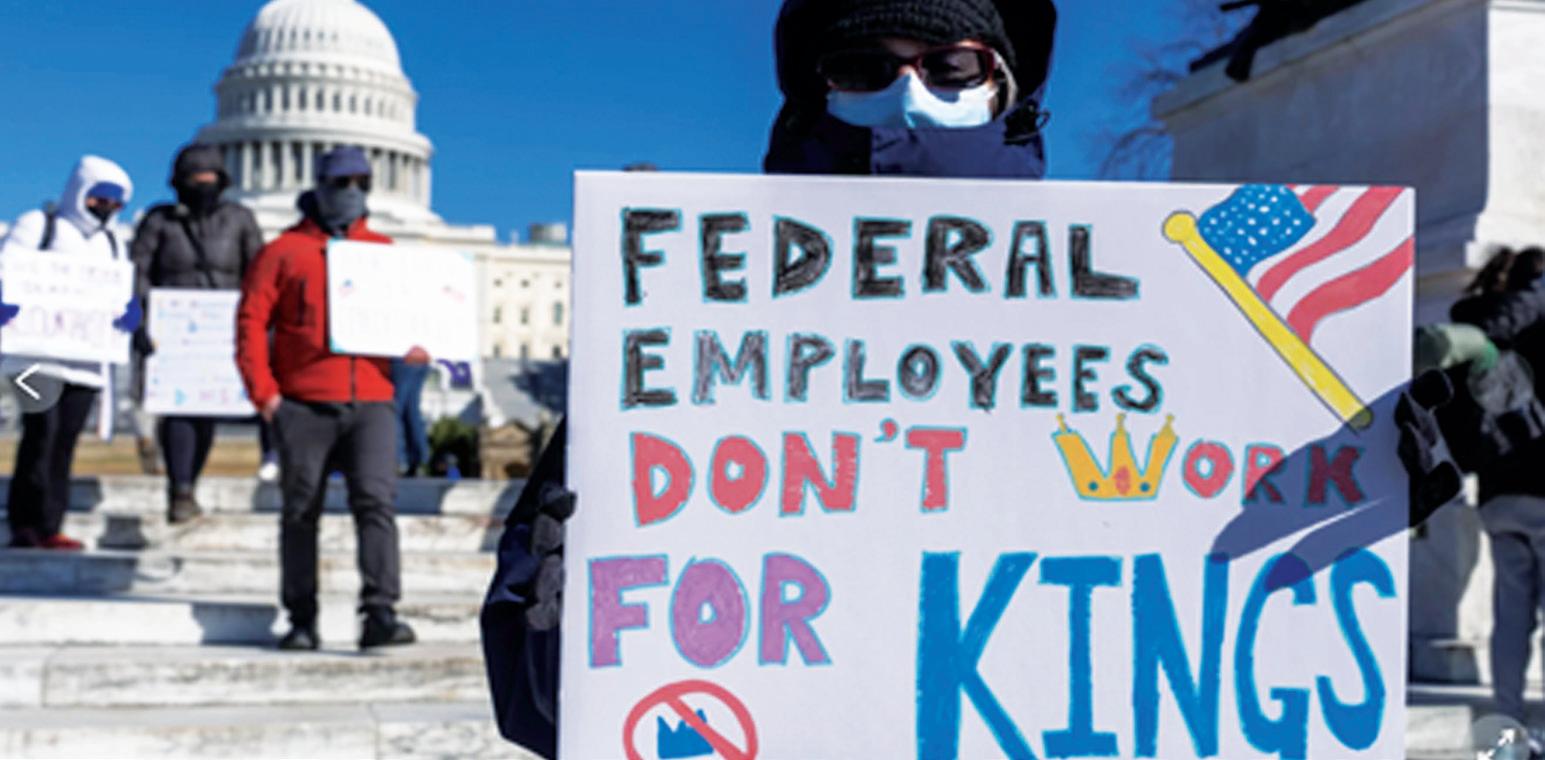
AP Photo / Jacquelyn Martin
A federal employee holds a sign reading “Federal Employees Don’t Work for Kings” during the national “No Kings Day” protest on Presidents Day, February 17, 2025, near the U.S. Capitol in Washington. The demonstration was part of a nationwide movement against perceived authoritarian overreach, with large sister rallies in Minneapolis and St. Paul that same year. Minnesota’s “No Kings” actions first filled the State Capitol grounds in June 2025 and later returned to downtown Minneapolis on October 18, 2025, where thousands gathered in a renewed show of civic defiance calling for democratic accountability and voting-rights protections. Those Twin Cities demonstrations reflected the same themes raised in Senator Tina Smith’s interview on The Conversation with Al McFarlane on Radio KFAI 90.3 FM, where she warned that power must always rest with the people.
reshaped the system.
Use of Federal force
Smith also spoke about the role of the federal government in domestic security. Referring to recent inci-
dents under President Donald Trump’s administration, she said, “They are sending masked federal agents into apartment buildings and taking people off the street, Black and Brown people, not white people. Turning the United States military against its own citizens is illegal.”
She compared the moment to an earlier period in history. “It is ironic,” she said. “The Insurrection Act was once used to protect civil rights protesters. Now it is being used to intimidate them.” The senator also then clarified that the National Guard is meant to assist during natural disasters or emergencies, not routine law enforcement. “The Guard is

Young, who has attended years of planning meetings, said community voices have already shaped the project.
“The Met Council is listening,” she said. “We’ll have more than one stop in North Minneapolis, platforms with accessibility features, and even a land bridge to reconnect parts of our neighborhood. These are things residents demanded.”
Burnett agreed but also focused on who gets hired.
“We want jobs at every level, from design to construction,” he said. “Our young people should be the ones planning and building the infrastructure they’ll use. That’s how you build ownership.”
A history of neglect, a future of possibility
McFarlane asked the candidates why so many North-
siders still feel forgotten. The answer, they said, lies in the city’s history, and the policies that sidelined Black and working-class neighborhoods.
“There’s no secret about the racial inequities in Minneapolis,” Burnett said.
“The disparities we see today didn’t happen by accident; they were designed that way. But we have the power now to rewrite that plan.”
All three candidates agreed that the solution begins with the basics: safe neighborhoods, small business investment, youth opportunity, and stable housing. “We deserve restaurants, coffee shops, pharmacies and all the things that make a community whole,”
Bernett said. “These aren’t luxuries. They’re essentials.”
For many Minneapolis residents, this year’s municipal election feels pivotal.
Beyond the mayor’s office, City Council seats like Ward 5’s will determine how the city balances safety, equity, and development in the years ahead.
Minneapolis voters will use ranked-choice voting, allowing them to rank up to three candidates in each race.
Election Day is Tuesday, November 4, 2025, with early voting still open.
Residents can learn
how to register, find their polling places, and understand ranked-choice voting at the City of Minneapolis Elections & Voter Services website: https:// vote.minneapolismn.gov/
For statewide resources, visit the Minnesota Secretary of State site at https:// sos.mn.gov/elections-voting
For McFarlane, the takeaway from the Ward 5 conversation was simple but urgent: “This is the heart of the city. What happens here reflects what happens to Minneapolis as a whole. The question is: will we show up for it?”
Watch the full Ward 5 conversation on YouTube: https://www.youtube. com/watch?v=eoXSdyoleU8
Watch the full interview with Pearll Warren on YouTube: https://www.youtube. com/watch?v=eoXSdyoleU8
Scan the QR code below to read more stories like this on Insight News:


Armed officers move to
drew national attention for its show of force in a largely Latino neighborhood. The incident reignited debate over federal militarization and accountability, themes echoed in nationwide “No Kings” protests and in Senator Tina Smith’s call for restraint and democratic oversight.
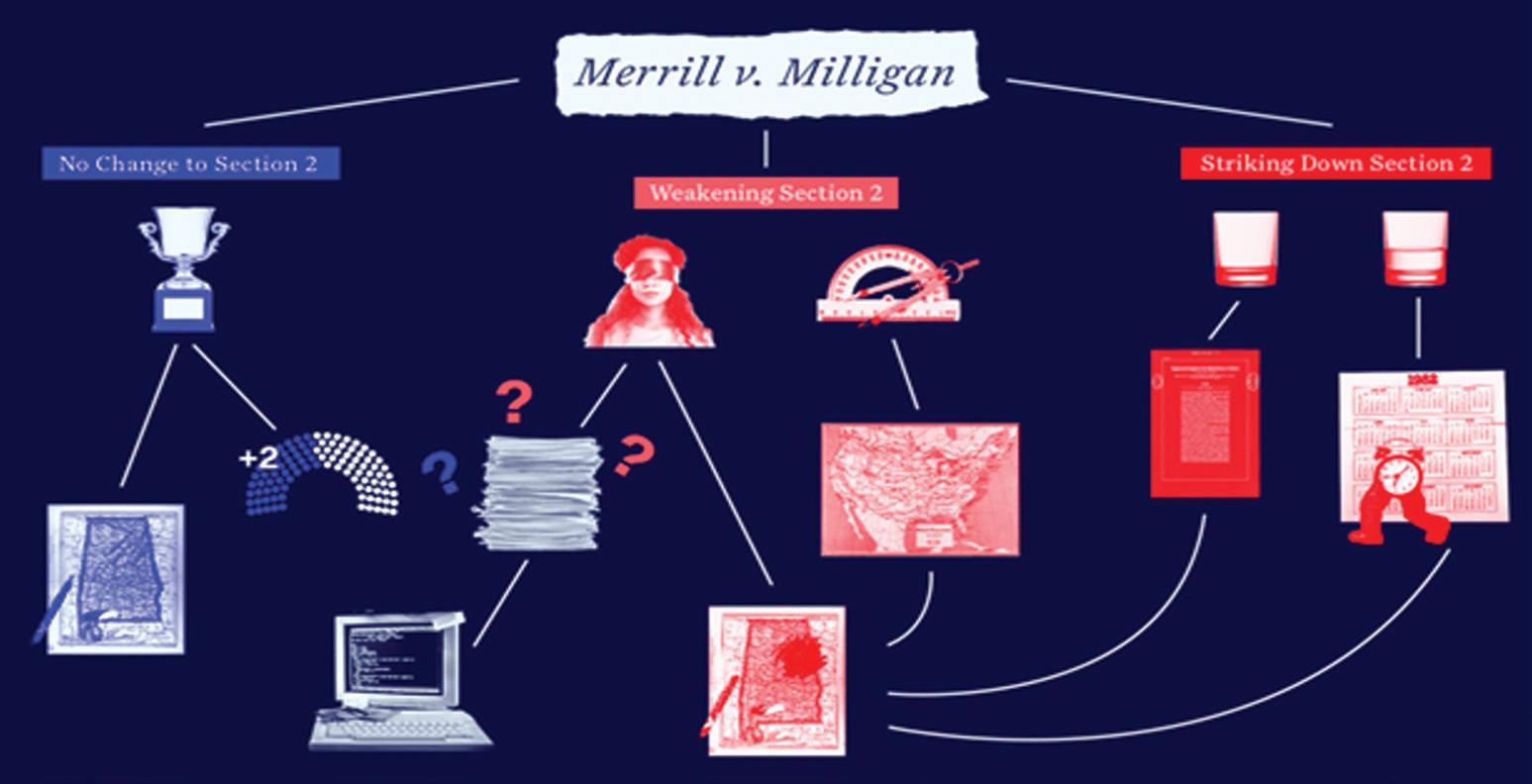
“How SCOTUS Might Determine the Future of the
Caroline
Democracy
(March 10, 2023). A decision tree from Democracy Docket illustrates the possible outcomes of Merrill v. Milligan, the landmark Supreme Court case that could redefine the Voting Rights Act’s Section 2 protections. At issue is whether Alabama’s 2021 congressional map unlawfully diluted Black voting power by creating only one majority-Black district instead of two. Each branch of the diagram represents a different legal scenario, from upholding existing protections to severely weakening them. One possible outcome could declare Section 2 unconstitutional or limit how race may be considered in redistricting, which would undermine decades of voting-rights precedent. Another, narrower ruling could preserve the law but tighten criteria for what counts as “compact” or “reasonably configured” districts. For voters in states like Alabama, Louisiana, and beyond, the Court’s decision will determine whether the federal government continues to guard against racial vote dilution or shifts that responsibility to individual states.
trained for disaster response,” she said. “Using one state’s Guard in another for political reasons is unprecedented.”
The Voting Rights in Question
Smith said the same erosion of democratic norms is now playing out in the courts. She referred to a case before the U.S. Supreme Court that could weaken Section 2 of the Voting Rights Act, which has for decades prevented racial discrimination in redistricting. “The Court is questioning whether it is still illegal to gerrymander based on race,” she said. “If that section is weakened, it would dilute Black votes and erase representation in many states.”
She also suggested that some recent deployments of federal forces could serve as a “rehearsal” for potential voter intimidation in future elections.
“There is real concern this could happen again in 2026,” she said.
A call for voter engagement
Despite her criticism of Washington politics, Smith ended on a note of resolve.
“Voters deserve leaders who are bold and willing to challenge a system that is rigged against regular people,” she said.
“Trump wants us exhausted and ready to give up. We cannot let that happen.”
Her message to Minnesotans was clear. “No bully is ever as strong as they pretend,” she said. “This is the moment for all of us to use our power, our votes, and our voices to protect democracy. Power comes from the people. That is how
For readers less familiar with the issue, Section 2 has been a key safeguard ensuring that minority voters can elect candidates of their choice. Smith warned that removing or weakening it could roll back decades of progress. “Without those protections, people will lose their voice,” she said.
this country moves forward.”
Host Al McFarlane thanked Smith for her service and for joining the program, which has long served as a platform for civic reflection in Minnesota’s Black and multicultural communities. The senator’s appearance, he said, reminded listeners that democracy requires both vigilance and participation. Watch the full interview with Senator Tina Smith on Insight News MN’s YouTube:
https://www.youtube. com/watch?v=2-kJUHNGAZQ

By Andrew Muhammad Professor of Agriculture and Resource Economics, University of Tennessee
Adam Taylor Professor of Natural Resources, University of Tennessee
Lumber, especially softwood lumber like pine and spruce, is critical to U.S. home construction. Its availability and price directly affect housing costs and broader economic activity in the building sector. The U.S. imports about 40% of the softwood lumber the nation uses each year, more than 80% of that from Canada.
President Donald Trump says that the U.S. has the capacity to meet 95% of softwood lumber demand and directed federal officials to update policies and regulatory guidelines to expand domestic timber harvesting and curb the arrival of foreign lumber.
On Sept. 29, 2025, he announced new tariffs on imported timber and wood products, including an additional 10% tariff on Canadian lumber. Those were added to 35% tariffs imposed on Canadian lumber in August. It was the latest phase in a long-standing dispute over the supply of lumber to builders in the U.S., which dates back to the 1980s, when U.S. producers began arguing that Canadian companies were benefiting from unfair subsidies from their government. Starting on Oct. 15, Canadian softwood lumber imports could face tariffs exceeding 45%.
As researchers studying the forestry sector and international trade, we recognize that the U.S. has ample forest resources. But replacing imports with domestic lumber isn’t
as simple as it sounds. There are differences in tree species and quality, and U.S. lumber often comes at a higher cost, even with tariffs on imports. Challenges like limited labor and manufacturing capacity require long-term investments, which temporary tariffs and uncertain trade policies often fail to encourage. In addition, the amount of lumber imported tends to mirror the boom-and-bust cycles of housing construction, a dynamic that tariffs alone are unlikely to change.
US lumber imports and housing starts rise and fall together
Since 1989, federal data shows that trends in lumber imports – the vast majority of which are from Canada – track closely with construction of new housing.
Trump’s moves To boost U.S. logging, in March, Trump issued an executive order telling the departments of Interior and Agriculture to ease what he called “heavy-handed” regulations on timber harvesting. The executive order and a follow-up memo from Agriculture Secretary Brooke Rollins do not spell out specifics, but officials say more details are in the works that will simplify the timber harvesting process, with the goal of boosting domestic timber production by 25%.
That same month, Trump ordered the Commerce Department to assess how imports of timber, lumber and related wood products affect U.S. national security.
While that assessment was underway, in July, the Commerce Department published findings from a trade review of 2023 Canadian lumber imports. That inquiry alleged that Canadian companies were selling lumber to the U.S. at

unfairly low prices, potentially leaving U.S. producers with lower sales or depressed prices. That finding was cited as the basis for the 35% August tariff announcement.
In its national security investigation initiated in March, the Commerce Department concluded that an overreliance on imported wood products means “the United States may be unable to meet demands for wood products that are crucial to the national defense and critical infrastructure.” The September tariff announcement is based on those findings.
Canadian lumber in the US market
In 1991, the U.S. imported 11.5 billion board feet (27 million cubic meters) of Canadian lumber. Those imports rose to a high of 22 billion board feet (52 million cubic meters) by 2005.
But as housing construction declined – especially during the Great Recession from 2007 to 2009 – imports dropped sharply, to less than 8.4 billion board feet (20 million
cubic meters) in 2009. The current volume has not recovered to prerecession levels, rising only to 12 billion board feet (28 million cubic meters) in 2024. The value of Canadian lumber has also fluctuated. Historically, prices for Canadian lumber have averaged about US$330 per thousand board feet ($140 per cubic meter). During and after the COVID-19 pandemic, import prices soared to almost $800 per thousand board feet ($340 per cubic meter). But since peaking in 2021 and 2022, prices have dropped significantly to $436 per thousand board feet ($185 per cubic meter) by 2024.
In total, in 2024, the U.S. imported more than $11 billion in forest and wood products from Canada. Softwood lumber accounted for almost half of that.
Lumber and housing As personal income rises and populations grow, people seek to build new homes. As new home construction – called “housing starts” in economic data – increases, so does de-
mand for softwood lumber to build those homes. And when housing starts slow, so does lumber demand.
For instance, housing starts fell during the Great Recession. They declined from a January 2006 peak of 2.3 million to less than 500,000 in January 2009 – a decrease of nearly 80%. In that same period, imports of Canadian lumber fell by more than 60%. Domestic softwood lumber production fell by more than 40%.
Both domestic and imported lumber prices can directly influence the overall cost of building homes, which in turn affects housing affordability. That said, lumber used for framing usually accounts for less than 10% of the total cost to build a new home. The effects of tariffs on new home construction may be significantly less than other factors, such as rising labor costs.
A matter of choice
The U.S. has a lot of potential lumber available. Especially in the South, the inventory of harvestable lumber has
grown significantly over many years.
However, the types of wood available in the U.S. are not always the same as what’s available from Canadian imports. For framing, contractors may prefer spruce, northern pines and fir, naturally abundant in Canada, because they are lighter and less likely to warp than southern

what


By Patrick Aguilar Managing Director of Health, Washington University in St. Louis
There are almost 1.1 million licensed physicians in the United States. That may sound like a lot, but the country has struggled for decades to train enough physicians to meet its needs – and, in particular, to provide care in rural and underserved communities.
Foreign-born physicians have long filled that gap, reducing the overall national shortage and signing up to practice in often overlooked regions and specialties. Today, 1 in 5 doctors licensed to practice in the U.S. were born and trained in another country.
But the ability of physicians from other countries to obtain work in the U.S. may be threatened by the Trump administration’s aims of limiting foreign workers. In September, Trump issued a proclamation requiring employers sponsoring foreign-born workers through a type of work visa called an H-1B to pay a fee of US$100,000 to the government.
The White House has signaled doctors may be exempt but has not clarified its position.
As a physician and professor who studies the intersection of business and medicine, I believe increasing restrictions on H-1B visas for physicians may exacerbate the physician shortage. To grasp why that is, it’s important to understand how foreign-trained doctors became such an integral part of U.S. health care – and the role they play today.
The roots of today’s physician shortage
The Association of American Medical Colleges, a trade association representing U.S. medical schools, estimates

there will be a deficit of about 86,000 physicians in the country by 2036. The roots of this shortage stretch back more than a century. In 1910, a landmark study called the Flexner Report detailed significant inconsistencies in the quality of education at American medical schools. The report resulted in the closure of over half the country’s medical schools, winnowing their numbers down from 148 to 66 over two decades.
As a result, the number of doctors in the U.S. declined until new training programs emerged. Between 1960 and 1980, 40 new medical schools launched with the help of federal funding. In 1980, a congressionally mandated assessment deemed the problem solved, but by the early 2000s, a physician shortage emerged once more. In 2006, the American Association of Medical Colleges called for raising medical school enrollment by 30%.
Growth in medical school enrollment hit that target
in the late 2010s, but even so, the U.S. still lacks enough medical graduates to fill yearslong training programs, called residencies, that early-career physicians must complete to become fully qualified to practice. Especially lacking are primary care physicians – particularly in rural areas, where there are one-third as many physicians per capita as in urban areas.
Opportunities for foreign-born doctors
Even as the U.S. built up medical school enrollment in the 1960s and 1970s, the government joined other countries such as the U.K. and Canada in creating immigration policies that drew physicians from developing countries to practice in underserved areas. Between 1970 and 1980, their numbers grew sharply, from 57,000 to 97,000.
Foreign-born and -trained physicians have remained a key pillar of the U.S. medical system. In recent years, the majority of those physi-
cians have come from India and Pakistan. Citizens of Canada and Middle Eastern countries have added significantly to that count, as well. Most arrive in the U.S. as trainees in residency programs through one of two main visa programs.
The majority come on J-1 visas, which allow physicians to enter the U.S. for training but require them to return to their home country for at least two years when their training is complete. Those who wish to remain in the U.S. to practice must transition to an H-1B visa.
A small percentage of physicians come to the U.S. on H-1Bs from the start.
H-1B visas are employer-sponsored temporary work permits that allow foreign-born, highly skilled workers to obtain U.S. employment. Employers directly petition the government on behalf of visa applicants, certifying that a foreign worker will be paid a similar wage to U.S. workers and will not adversely affect the working conditions of Ameri-
cans.
Several programs sponsor H-1B visas for physicians, though the most common requires a three-year commitment to work in an underserved area after completing their training.
Foreign physicians fill a crucial need
In 2025, foreign-trained medical graduates filled 9,700 of the nearly 40,000 training positions. Of those, roughly one-third were actually U.S. citizens who attended medical schools in other countries, with the remainder being foreign citizens seeking more training in the U.S.
After residency, these doctors frequently practice in precisely the geographic areas where the physician shortage is most severe. A nationwide survey of international medical graduates found that two-thirds practice in regions that the federal government has designated as lacking sufficient access to health care.
These doctors also
occupy a disproportionate number of primary care positions. In a sample of 15,000 physicians who accepted new jobs in one year, foreign-born doctors were nine times more likely to enter primary care specialties. In 2025, 33.3% of internal medicine, 20.4% of pediatric and 17.6% of family medicine training positions were filled by physicians trained in other countries.
Who will pay?
Approximately 8,000 foreign-born physicians received H-1B visas in 2024. The new requirement of a $100,000 sponsorship fee would hit hardest for hospitals, health systems and clinics in areas of the country most significantly affected by the physician shortage. These organizations are already under economic strain due to increasing labor costs and Medicare payments that have not kept pace with inflation. Dozens of these hospitals have closed in recent years, and many currently do not make enough money to support their operations.
On Sept. 25, 2025, 57 physician organizations cosigned a letter petitioning Homeland Security Secretary Kristi Noem to waive the new application fee for physicians. Already, however, the new rule may be having a chilling effect. Despite years of annual growth in the number of foreign-born applicants to U.S. physician training programs, 2025 has seen a nearly 10% drop. If the new H-1B fee is applied to physicians, the number is likely to keep falling. Disclosure statement Patrick Aguilar does not work for, consult, own shares in or receive funding from any company or organisation that would benefit from this article, and has disclosed no relevant affiliations beyond their academic appointment.
By Michael White Distinguished Professor of Pharmacy Practice, University of Connecticut
Powder and ready-to-drink protein sales have exploded, reaching over US$32 billion globally from 2024 to 2025. Increasingly, consumers are using these protein sources daily.
A new study by Consumer Reports, published on Oct. 14, 2025, claims that some such protein products contain dangerously high levels of lead, as well as other heavy metals such as cadmium and arsenic. At high levels, these substances have serious, well-documented health risks.
I am a clinical pharmacologist who has evaluated the heavy metal content of baby food, calcium supplements and kratom products. Lead and other heavy metals occur naturally in soil and water, so achieving zero-level exposure would be impossible. Additionally, the level of lead exposure that Consumer Reports deems safe is significantly lower than those set by the Food and Drug Administration. However, regardless of the safety cutoff, the study does show that a few products are delivering a concerningly high dose of heavy metals per serving.
How Consumer Reports did the study
The new study assessed 23 powder and readyto-drink protein products from popular brands by sending three samples of each product to an independent commercial laboratory.
Consumer Reports considered anything over 0.5
micrograms per day from any single source to be above recommended maximum lead levels. That number comes from the California Office of Environmental Health Hazard Assessment, which established recommended maximum levels for a variety of substances that could cause cancer or fetal harm.
It is significantly more conservative than the safety standard for lead exposure used by the FDA for drugs and supplements. The discrepancy is driven by Consumer Reports’ aspirational goals of very low exposure versus the more realistic but actionable requirements from the FDA.
According to the FDA, the limit for the amount of lead that a person should consume from any single dietary supplement product is 5 micrograms per day. That number is 10 times higher than the Consumer Report limit.
The FDA has another standard for the total daily amount of lead a person can safely consume from food, drugs and supplements combined. This number, called the Interim Reference Level, or IRL, for lead is based on concentrations of lead in the blood that are associated with negative health effects in different populations.
For people who could become pregnant, that level is 8.8 micrograms per day, and for children it’s 2.2 micrograms per day. For everyone else, it’s 12.5 micrograms per day. Every food, drug and dietary supplement that contains lead contributes to the total daily exposure, which should be less than this amount.
What the report found The nonprofit advoca-

cy group found that 16 of the 23 products it tested exceeded 0.5 micrograms, the level of lead in a standard serving that the organization deems safe.
Four of the 23 products exceeded 2.2 micrograms, the FDA’s cutoff for the total daily amount of lead children should consume. Two products contained 72% and 88%, respectively, of the total daily amount of lead that the FDA deems safe for pregnant women.
In addition, Consumer Reports found that two of the 23 products delivered more than what it considers a safe amount of cadmium per serving, and one had more arsenic than was recommended.
The organization’s safety cutoff for cadmium is 4.1 micrograms per day, and for arsenic it is 7 micrograms per day. These numbers align fairly closely with the FDA’s recommended exposure limit for cadmium and arsenic from a single product. For cadmium, the FDA’s limit is set at 5 micrograms per day for a given dietary supplement product and
15 micrograms per day for arsenic.
The study found that the source of protein was key: Plant-derived protein products had nine times the lead found in dairy proteins like whey, and twice as much as beef-based protein.
Where are these heavy metals coming from?
Lead and other heavy metals are present in high amounts in volcanic rock, which comes from molten rock called magma beneath the Earth’s surface. When volcanic rock is eroded, the heavy metals contaminate the local soil and water supply. What’s more, some crop plants are especially efficient at extracting heavy metals from the soil and placing them in the parts of the plants that consumers ingest. Fossil fuels, which come from deep within the Earth, also billow heavy metals into the air when they are burned. These substances then settle out into the soil and water. Finally, some fertilizers, herbicides and pesticides also contain heavy metals that can
further contaminate soil and local water.
High levels of heavy metals have been found in plant-based protein powder, spices like cinnamon, dark chocolate, root vegetables like carrots and sweet potatoes, rice, legumes such as pea pods and many herbal supplements. Should consumers be concerned? And what can they do?
Occasionally exceeding the daily recommended heavy metal doses is unlikely to result in serious health issues. Repeated, heavy exposure to heavy metals can cause harm, however. When they accumulate in the blood, these substances can delay or impair mental functioning, damage nerves, soften bones and raise blood pressure – which in turn increases the risk of strokes and heart attacks. Heavy metals can also increase the risk of developing cancer.
It’s important to note that all the products Consumer Reports flagged have lead levels significantly lower than the maximum daily exposure levels
established by the FDA. Consumers can limit exposure by choosing dairy- or animal-based sources of protein products, since they generally seemed to have less heavy metal contamination than plant-based ones. However, some plantbased protein products in the study did not have high levels of heavy metals. Heavy metal levels vary widely in the environment, so the results from the Consumer Reports study show a snapshot in time. They might not be consistently accurate across batches if, for example, a manufacturer changes the source of its raw ingredients. For protein products that do show an especially high heavy metal content, using them more sporadically, rather than daily, can reduce exposure. Studies suggest that organic plant-based products generally yield less heavy metal content than traditionally farmed ones.
Finally, the Consumer Reports study measured heavy metals in a single serving of protein products, so it’s helpful to understand what constitutes a serving for specific products and to avoid sharply increasing daily consumption.
Overall, the wide variation in lead levels across different protein powders and ready-made protein products highlights the need for manufacturers to tighten product testing and good manufacturing practices.
Disclosure statement
C. Michael White does not work for, consult, own shares in or receive funding from any company or organisation that would benefit from this article, and has disclosed no relevant affiliations beyond their academic appointment.
By Beth Harris AP Sports Writer
INGLEWOOD, Calif. (AP)
— Four days after a humbling loss, the Los Angeles Chargers bounced back in a big way.
Justin Herbert threw for 227 yards and three touchdowns in a 37-10 win over the Minnesota Vikings on Thursday night, ending a skid of three losses in four games that knocked them from atop the AFC West.
"It was a big win for us, a big opportunity for us to go correct some more mistakes," said Herbert, who also rushed for 62 yards.
The Chargers (53) won for the first time since Week 6 at Miami, after coming off a resounding 38-24 defeat to the AFC South-leading Indianapolis Colts at SoFi Stadium.
"The team really responded," Chargers coach Jim Harbaugh said. "They went back to work after Sunday and they set their minds to it that they weren't going to be denied."
The Chargers scored 30 points or more for the first time and didn't punt.
"If we don't beat ourselves, I feel like we're a hard football team to beat," said Ladd McConkey, who caught a 27-yard TD pass from Herbert that made it 21-3 late in the first half.
Keenan Allen had four catches for 44 yards and

joined Hall of Famer Antonio Gates as the only players in Chargers history with 11,000 receiving yards.
The Vikings (3-4) lost consecutive games for the first time this season, with both coming in a five-day span. They managed just 12 first downs to 29 for the Chargers, were 3 of 11 on third down and had the ball for just 21 minutes. "This is not a burythe-tape kind of time for our organization," Vikings coach Kevin O'Connell said. "This is a watch it, view it, own it — every coach and every player, and it starts with me. I did not have our team prepared to play."
Carson Wentz started on short rest in place of quarterback J.J. McCarthy, who missed his fifth straight game with an ankle injury. Wentz was 15 of 27 for 144 yards with one touchdown and an interception while getting sacked five times. He played through a left shoulder injury that he aggravated multiple times. "Hats off to their defense on a short week," Wentz said. "Scheme-wise, they have some good players. We were banged up up front. I thought guys competed their tails off. I could always get the ball out quicker and make some plays and make decisions faster, but
the defense made it tough."
The Chargers had chances to score on all four of their possessions in the first half, and they led 21-3 at the break. They missed only on Cameron Dicker's 49-yard field-goal attempt that went wide left after holder JK Scott had to go up and get a bad snap. Dicker had made 46 of 47 attempts at home. Oronde Gadsden II caught an 8-yard TD pass and Kimani Vidal scored on a 3-yard run to go with McConkey's score. Vidal finished with 117 yards rushing. Scott salvaged another bad snap on Dicker's 49-yard
field goal early in the third that extended the lead to 24-3. After the Vikings were forced to punt, Herbert was intercepted at the Chargers 26. That led to the Vikings' lone touchdown, helped by two Chargers penalties.
Will Reichard's 32yard field goal was nullified when the Chargers were penalized for having too many men on the field. The Vikings went for it on fourth-and-9 and Wentz nearly got sacked, but Chargers cornerback Benjamin St-Juste was penalized for illegal contact. That kept the drive alive and Wentz hit Jordan Addison for a 4-yard score to make
it 24-10.
The Chargers answered early in the fourth on Herbert's 6-yard pass over the middle to Tre' Harris. The Vikings were penalized for too may players on the field and the Chargers overcame a false-start penalty by Foster Sarell.
Rookie RJ Mickens had his first career interception, picking off Wentz to end Minnesota's first possession in the fourth.
The Chargers caught a couple of breaks on their way to taking a 7-0 lead.
Isaiah Rodgers' apparent pick-6 of Herbert was reversed and ruled an incomplete pass.
Herbert scrambled up the middle, dodging two defenders in the backfield and two at the line of scrimmage, to get the Chargers to third-andgoal. On the next play, Gadsden scored before the rookie was penalized for unsportsmanlike conduct.
Vikings running back Aaron Jones returned from a hamstring injury that kept him out the last four games. He rushed for 15 yards on five carries and had two catches for 15 yards.
Injuries Vikings: CB Jeff Okudah (concussion) left in the third quarter. ... LT Christian Darrisaw (knee) and TE Josh Oliver (foot) got hurt.
Chargers: S Derwin James Jr. (ankle) and RG Mekhi Becton (ankle) got hurt in the first quarter.
This is the first installment of the Four Minute Offense, the moment where the team possessing the ball must run the ball, call high-percentage pass plays, and the war daddies (also known as the offensive linemen), can get off the ball and turn up. Four talking points will be served up ahead of next week’s action. With that in mind, here we go!
Number one: The rumors of Jalen Hurts’s demise are greatly exaggerated. After last week’s disastrous outing against the New York Giants, Philadelphia Eagles quarterback Jalen Hurts faced a wave of criticism and harsh commentary. However, his stellar performance on Sunday against the Minnesota Vikings should silence any remaining doubters. Hurts delivered an exceptional game, completing 19 of 23 passes for 326 yards and three touchdowns, leading the Eagles to a 28-22 victory at U.S. Bank Stadium — without throwing a single interception. What makes this feat even more impressive is that Hurts dominated the NFL’s second-ranked pass defense. He became the first quarterback this season to record a perfect passer rating of 158.3. With this game, Hurts now boasts 44 career performances with a passer rating above 100. Only a handful of elite quarterbacks have achieved more within their first six seasons — Patrick Mahomes (57), Russell Wilson (52), Dak Prescott (45), and Josh Allen (44). Howard Eskin’s calls for backup QB Tanner McKee to start ahead of Hurts must be quashed. Immediately. Number two: Joe Flacco was not the problem in Cleveland. In ten days, Flacco was traded away from the Browns to the Cincinnati Bengals, started against the Pack-

ers and four days later, beat the Pittsburgh Steelers. Yes, Flacco threw for 342 yards and three touchdowns. However, this is where things get interesting. Flacco admitted he was consulted about the move by Browns general manager Andrew Berry before the trade. On the surface, it was weird a starting quarterback would be traded within the same state and within the same division. However, Flacco is a man. He is 40. He was owed that right as an accomplished veteran and an OG in the league. Number three: Patience will be a virtue in Tennessee. The dismissal of head coach Brian Callahan after just 23 games underscores a growing theme within the Tennessee Titans organization — the impatience of owner Amy Adams Strunk. Frustrated and embar-
rassed by her team’s lackluster performances, Strunk made it clear that accountability ultimately rests on her shoulders.
Now, Chad Brinker, the Titans’ president of football operations, and general manager Mike Borgonzi are set to lead the search for Callahan’s replacement. According to team insiders, the next head coach will likely have only a two- to three-year window to turn the Titans back into playoff contenders.
Importantly, the new head coach’s success will be tied to the success (and development) of first overall pick, Cam Ward. Through seven games, Ward has completed 57.6 percent of his passes for 1,356 yards. He has thrown 4 touchdowns and 5 interceptions. Ward’s passer rating is 70.9. Notably, he has lost five fumbles.
Ward is signed with the team through at least 2028. The Titans will move into the new (and domed) Nissan Stadium across the parking lot in 2027. And, Adams Strunk is expected to bid for upcoming Super Bowls. Whether or not Tennessee will have a competitive team at that time will be dependent upon Adams Strunk’s patience.
Number Four: Woody Johnson has seen enough of Justin Fields, backs HC Aaron Glenn Watching the New York Jets this season has often felt more like an endurance test than entertainment. At times, their games demand patience and resilience from fans. One thing, however, is undeniable — the Jets’ offense has struggled mightily. Through seven games, New York ranks near the bottom of the NFL, averaging
just 271.3 total yards per game, the fourth-worst mark in the league, and scoring an average of 18.4 points per contest.
“I see what you see, but I see more hope than you do,” Johnson said. “You can’t win with hope, but it helps.”
But, he has little faith in Fields.
“If we could complete a pass, it would look good,” Johnson said of his team. “It’s hard when you have a quarterback with a rating that … he has the ability but something is just not jiving. But if you look at any head coach with a quarterback like that you’re going to see similar results if you go across the league, you have to play consistently at that position and that’s what we’re going to try to do for the remainder of the season.”
Sunday, Fields was pulled in favor of backup Tyrod
Taylor in the loss against the Carolina Panthers. Fields completed six out of twelve passes for 38 yards. Overall, Fields has not turned the ball over, but has been sacked 18 times. It should be clear Taylor will start against the Jets’ next game against the Cincinnati Bengals. However, this Jets job is tough because the offensive line is not great. That room must be torn down to the studs and be rebuilt. It’s not about the x’s and o’s but the Jimmies and the Joes.
The Point After Remove the ‘former’ tag from Philadelphia Eagles defensive end Brandon Graham. He has announced his intentions to return to the team on his Unblocked Podcast. Graham felt he never was fully done with football, but he could not pass up the storybook ending after winning Super Bowl LIX.
“I understood both sides of it, man,” Graham said. “Year 15, there’s no better way to go out. They was probably thinking the same thing.
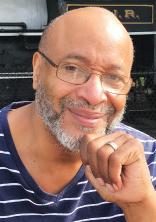
By W.D. Foster-Graham Book Review Editor
We often think of words of wisdom and quotes from our mothers—after all, we come from a legacy of amazing Black women—always have, always will. Now, it is time to think of the words of wisdom from our fathers, and how those gems shaped our lives—sometimes humorous, sometimes insight-
ful, sometimes wry, sometimes cautionary, sometimes inspirational, but always with love as they are passed down from one generation to the next. Sometimes those words are taught in a grand way, from notable and celebrated Black men in our history. At other times, it happens in the little teachable moments of everyday routine, passed down from father to daughter or father to son. Sometimes the lessons come from learning from their mistakes!
That being said, I bring to you Valarie Johnson Aiken’s (the artist formerly known as Valarie) book, Lessons Learned from Dad: Notes for Life. Inspired by her father
Everett Johnson, Aiken imbues the book with the knowledge and values passed down from him, with space on each page to journal the reader’s thoughts. The topics are divided into the following: Dignity (“Never hang your head in front of anyone!”), Duty and Responsibility (“Always tell your children they are brilliant—they will believe you.”), Joy (“Black licorice is almost as good as chocolate.”), Courage (“Listen…to your wife.”), and Wisdom (“Hire someone else to teach your children to drive.”). The previous quotes are just a few of many handed down over the years to Aiken, and by extension to the Johnson family. I couldn’t help but
think of lessons I learned from my father when I read this book, lessons that helped to shape the man I am today. One of them was, “If you say you’re going to do something, be prepared to carry it out.” This is a quick read, yet it’s fun, insightful, inspiring, and powerful in sharing the legacy of a father.
Kudos to Aiken for her cover art, to her granddaughter Kayli Knighton-Johnson for her original drawing, and Pali Graphics and Illustrations for the graphic design that bring the flavor of life and love to her work.
Thank you, Valarie, for sharing these gems in memory of your dad, Everett Roosevelt Johnson, Jr.

By Lauren Burke Black Press USA
what
when
once said he
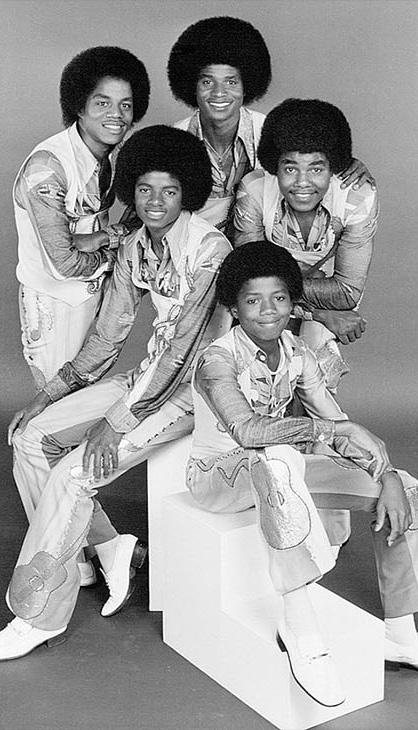
would trade it all—fame, fortune, and fans—to return to Gary, Indiana, to live again as a family, he spoke a truth too heavy for the world that fame built. For the Jacksons, the price of glory was not simply isolation; it was erasure. The Jackson empire was carved from the calloused hands and boundless genius of a Black family who dared to believe that rhythm could set them free. And yet, decades later, that empire stands as a monument to irony: a fortress of Black creation now inhabited by white heirs. Paris Jackson, the daughter of Michael, has filed a legal challenge against the estate that not only sustained her but also saved her. She calls the executors “the Wizard of Oz,” accusing them of arrogance and secrecy. But her rebellion is not against oppression — it is born from privilege. While her father died crushed beneath $500 million in debt and accused of the unthinkable, his executors, John Branca and John McClain, raised his name from ashes to billions. They rebuilt his legacy, secured his music, and gave his children the kind of wealth that most Black families in America are still forbidden to imagine. Paris has already received more than $65 million
from the estate. She lives not in scarcity but in abundance — buying homes the way some people buy shoes, leaving one behind when it no longer thrills her. A family insider said, “She quickly got bored with one house and simply bought another.” It is a luxury made possible not by labor or struggle, but by inheritance — by the color of her lineage in a country that rewards proximity to whiteness. Prince Jackson has chosen grace, calling for reason and restraint. Bigi remains quiet, unseen. But Paris wages her battle in public, against the very men who ensured she could fight at all. It would be easier, perhaps, to dismiss her as simply misguided — a young woman struggling to define herself beneath the shadow of an immortal father. Yet to do so would ignore the deeper truth. Her defiance is not rebellion against injustice; it is the performance of privilege. It is the kind of fight only the wealthy can afford — the kind of noise only heard when one has never known silence. Meanwhile, the family that began it all — Jermaine, Marlon, Jackie, Randy — stands on the sidelines, the architects of a dynasty watching as the wealth of their name enriches a generation that will never know
the pain of Gary’s steel mills or the racial contempt that
could
now mirrors what the nation has always done: transfer Black labor into white prosperity. This is not merely family drama. It is history repeating itself. The Jacksons built a legacy from rhythm and pain, from the hard beauty of Black creation. And now, as Paris fights the estate that feeds her, she becomes both symbol and symptom of a world where white wealth is inherited, and Black genius must always be defended. Michael Jackson once sang of being the man in the mirror, begging humanity to change its ways. But the mirror now reflects something colder — a daughter at war with the ghost of her father, and an empire where the struggle of a Black family has become the comfort of a white one. In the end, the question is not whether Paris Jackson is wrong. It is whether the world that produced her can ever be right.
We’re Building a Better
From hammers and walls to stronger futures, we’ve always been about housing. Now, we’re making homeownership easier than ever.
Start your journey with us Visit www.tchabitat.org.
